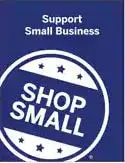|
Here's the hard truth: Not all leg exercises are created equal. Whether your goal is to get gorgeous gams, build lower-body strength or increase your endurance as a runner, you don't want to waste your time or energy or risk a potential injury on ineffective, inefficient leg exercises.
Here , Geoff Tripp, CSCS, certified personal trainer and head of fitness at Trainiac, shares five ineffectual moves to cut from your leg day, plus what to do instead for a fitter, stronger, more powerful lower body. 1. Leg Extension Machine What the leg extension machine lacks is functionality, Tripp says. "There aren't many times in the day when we sit locked in a machine and extend our legs in an isolated fashion," he says. Conversely, we usually do complex movements that involve many muscles in our quads, hips and glutes. Think: lunging forward to pick something off the floor or climbing the stairs. That's why "performing multi-joint exercises for your lower body muscle needs is ideal," he says. Instead: A great replacement is a squat, Tripp says. The mother of all functional exercises, squats are compound movements that recruit many muscles, help you build strength for the physical demands of daily life and lower your risk of injury.
2. 45-Degree Leg Press" Another move that takes a functional movement pattern and locks you in place, the leg press is great for pushing a lot of weight but doesn't transfer into real life unless you are lying on your back and pressing cars all day," Tripp says. Plus, people have a habit of overloading the weight, which adds to the potential for injury. Instead: A fantastic functional exercise, goblet squats will work your lower body in a multi-joint way, plus the movement translates to everyday situations, he says. Anyone who's ever bent down to lift something off the floor will understand. And there's a bonus: you'll get a good ab workout too. A June 2013 study published in The Journal of Strength and Conditioning Research found that performing multi-joint moves like squats is a more effective way to train your core than abs-focused movements.
3. Lying Leg Curl Machine A machine like the lying leg curl only isolates a muscle at a specific joint and range of motion, Tripp says. That's why it's best incorporated as a tool for rehabbing a particular muscle — not for those looking to build muscle or improve their overall fitness. If you're not recovering from an injury, you should focus on functional, compound lower-body movements to target your posterior chain muscles (the ones that run along the back of your body). And to do that — and train your hamstrings and glutes effectively — Tripp says you need to be standing on two feet, not lying down on a machine. Instead: Deadlifts (and their many variations) are the best move for multi-joint, lower body posterior muscle recruitment, Tripp says. Doing deadlifts helps you develop the strength you need for everyday bending and balancing.
Tip Remember, it’s all in the hips. “If you feel your back working too much in your deadlifts, then you’re likely not hinging properly at your hips,” Tripp says. 4. Standing Calf Raise Machine Unless you're rehabilitating a strained calf muscle, there's no need to train your calves in isolation, Tripp says. "Again, isolated movements like these don't teach your body proper muscle recruitment," he says. Instead: To be efficient with your time and training, try incorporating more plyometric movements into your workout. Plyo moves like jump squats require extension of the ankle joint, which engages the calf muscles, Tripps says. That's why these exercises are great replacements for the standing or seated calf raise machine. Dynamic moves like squat jumps also get your heart pumping and recruit multiple muscles. "There's a lot of force at play, both at takeoff and at landing," he says. Plus, you can control the difficulty level of the exercise — the higher you jump, the harder it'll be.
5. Seated Thigh Machine (Adductor and Abductor) "This machine does a great job at isolating the muscles at the joint but does little to teach the body how to use the muscles in a practical way," says Tripp. "The adductor and abduction muscles are used to support the hips during multi-joint movements, so we want to try our best to work them in a functional position, i.e., standing." Instead: Tripp recommends the standing cable machine for abduction and adduction exercises. "Here we promote stability in a standing position as well as recruitment of these muscles and awareness of how they work to stabilize the hip," he says. Tip If you don't have access to a cable machine, you can substitute with a resistance loop. Move 1: Hip Abduction
Move 2: Hip Adduction
ReferencesThe Journal of Strength and Conditioning Research: “Systematic Review of Core Muscle Activity During Physical Fitness Exercises.” The opinions expressed here by Bergen Review Media columnists are their own, not those of Bergenreview.com. If you don't exercise regularly, consult a physician before trying any of these exercises How to Use a Rowing Machine Correctly—Because We’re Definitely All Making the Same Mistake6/12/2021 Kells McPhillips Almost all novice rowers make the same mistake within seconds of strapping into a rowing ergometer, says world-class rower Libby Peters, the former associate head coach of the University of Pennsylvania women’s rowing team. As a member of the U.S. National Team, Peters won a bronze medal at the 2008 World Rowing Championships. Needless to say she knows how to use a rowing machine properly.It’s not entirely intuitive, but with practice, rowing becomes as natural as, say, breathing. And now that it’s no longer a sport reserved for Ivy League athletes, rowing machines have finally found their way into fitness studios throughout the country. From New York’s City Row to high-tech at-home equipment, strokes are becoming as ubiquitous as cycling or running. But perhaps rowing’s greatest appeal is the uniquely low-impact efficiency of the movement. While providing a great full-body workout, a rower is designed primarily to target your legs—but the most common mistake is that too many people task their arms with all the work, pulling with all their might, says Peters. She recommends rethinking the way you approach the exercise. “The thing to remember about rowing is, it’s basically like you’re lifting like a heavy load,” says Peters. “When you’re in a boat, the load is you and the boat itself; when you’re on the erg, the load is the resistance being created by the machine.” (I don’t know about you, but this was an “aha!” moment for me when I heard it.) Below, Peters explains how to fix your rowing form. With practice, the rowing machine promises to become one of your favorite pieces of equipment Wondering how to use a rowing machine properly? Learn from a world-class rowing coach Before you sit down on the sliding seat, make sure the adjust rowing machine’s damper setting. This mechanism, located on the side of the machine, determines the resistance level. Set it to level three, four, or five. Cruising at these lower speeds will keep you from hurting yourself when you’re just getting your sea (land?) legs, according to Peters.
Try out your new form with a 12-minute rowing workout“I always recommend starting with intervals,” says Peters. For a quick-hit cardio session, alternate every 60 seconds between slow strokes that focus on strength and proper form (shoot for 16 to 18 strokes per minute), and strokes that are more casual as your active recovery. Go back and forth between the two for 10 to 12 minutes. “I really like interval workouts for young or new athletes,” she says. “I think you get more out of it by doing higher quality with shorter time or shorter distance.” Speaking of gym machines that we love, this one gives you a full-body workout in a single move and the secret to giving your booty a boost on the treadmill. When you want a feel-good, low-impact workout that also makes you work up a sweat in minimal time, there’s one answer: power yoga. Unlike your traditional calming flow, it’s basically a high-intensity form of yoga that focuses on cardio and strength-building. Hello, full-body burn. There Are 38 Million Power Yoga Videos—These Are the 9 Best You Can Do in 10 Minutes or Less 1. Rebecca Louise 10-minute full-body power yoga workout The nice thing about this power yoga circuit is you can make it as easy or as hard as you want. 2. Deliciously Ella sweaty 10-minute fire flow You’ll definitely get your cardio in with this fun—yet challenging!—flow. 3. Five Parks Yoga 10-minute power yoga class This power yoga video isn’t for newbies. If you’re still working on your balance, you might want to start with another option. 4. Yoga With Bird 5-minute morning yoga power flow Only have 5 minutes? Then this morning yoga power flow is the perfect way to start your day 5. PsycheTruth 10-minute power yoga workout If you’re looking for a beginner-friendly option, this is it. This workout specifically helps strengthen your arms and core. 6. Yoga by Candace 10-minute power yoga vinyasa If you’re a fan of headstands, you’ll have a lot of fun with this power yoga vinyasa workout. If not, you might want to skip it until you get it nailed down. 7. Yoga with Kassandra 10-minute cardio yoga workout You’ll definitely work up a sweat in this booty, core, and upper body-focused power yoga flow. 8. SarahBethYoga 10-minute power yoga workout for abs You’ll get in a killer core workout in this power yoga workout that will make your abs feel like they’re on fire. 9. Koya Webb 10-minute HIIT yoga This workout combines traditional yoga with HIIT movements added in to give your metabolism a boost. These are some of the most common mistakes people make with yoga:BY GEOFFREY JAMES Music makes you more productive but here's a playlist that might make you more successful. It's been known for decades that music makes you more productive. People who listen to music at work feel better about the workplace and tasks get done more quickly. People even rate conversations as "more satisfying" when there's background music present. A recent survey of over a thousand employers and employees, conducted by the workplace music provider CloudSound gauged the respondents' feelings about music in the work place. Among the findings:
"Brain imaging studies have shown that various parts of the brain may be activated by a piece of music." In other words, you can use specific pieces of music to "program" your brain to think and feel in specific ways. So, then, which songs are the most likely to make YOU more productive and satisfied at work? That varies according to your individual background and personality, but here are 39 songs that nine of the world's most successful people have in their playlist, in alphabetical order:
The opinions expressed here by bergenreview.com columnists are their own, not those of bergenreview.com.
 The research is clear. You can improve your physical and mental health by thinking this more frequently. Most people realize that the mind and body are connected into a feedback loop. "A healthy mind in a healthy body" is why psychologists and physicians alike recommend sensible eating and regular exercise. Neuroscientists, however, recommend a different approach. Because they know that body-centric lifestyle changes (like diet and exercise) are difficult to maintain, they recommend starting with the mind. And they've identified the one thought that, when regularly focused upon, is most likely to propel your mind and body into an upward spiral. That thought? Neuroscience Says Your Body and Mind Get Stronger When You Focus on GRATITUDEYes, that sounds all crunchy granola, but there's actually extensive research into the positive mental and physical effect of that specific thought and emotion, according to a fascinating article published by the Wharton Health Care Management Alumni Association. Here are some highlights: 1. Gratitude makes you more likely to exercise. According to the Journal of Personality and Social Psychology, people who keep gratitude journals "reported fewer health complaints, more time exercising, and fewer symptoms of physical illness." 2. Gratitude reduces your stress level. According to a study published by National Center for Biotechnology Information "cultivating appreciation and other positive emotions showed lower levels of stress hormones [specifically] a 23 percent reduction in cortisol and 100 percent increase in DHEA/DHEAS levels." 3. Gratitude improves the quality of your sleep. According to a study conducted at the University of Manchester and published in the Journal of Psychosomatic Research, regularly focusing on gratitude and thankfulness "improved quality of sleep and [resulted in] longer sleep hours." 4. Gratitude increases your emotional well-being. According to studies published in the Journal of Research in Personality, gratitude leads to lower depression and higher levels of social support while making you less likely to consider suicide. 5. Gratitude makes your heart stronger and healthier. According to research conducted at Massachusetts General Hospital, the presence of gratitude in a patient "may independently predict superior cardiovascular health." Other studies show that gratitude increases the physical activity and therefore the speed of recovery for heart patients while reducing their inflammatory biomarkers. 6. Gratitude makes you a more effective leader. According to a Wharton study, grateful leaders "motivated employees to become more productive [because] when employees feel valued, they have high job satisfaction, engage in productive relationships, are motivated to do their best, and work toward achieving the company's goals." In some of the studies, participants kept a gratitude journal in which they'd list at the end of the day all the reasons they felt grateful. That's a good technique, but you can feel gratitude all day by simply asking yourself, "What can I feel grateful for right now, right here?" Your brain will come up with an answer. Article by Lauren Cahn of "Eat this not that" Until you get the vaccine, you can try eating your way to a stronger immune system. COVID-19 is now associated with at least 98 symptoms, some of which you never want to experience, and others that may not go away. Unfortunately, it's currently not possible to make yourself immune to the virus that causes COVID-19, even if you've already had it. So it's crucial to know what you can do right now to cut your COVID risk as cases continue to spike. It's important to steer clear of these 100 worst foods for cold and flu and these 20 foods that are surprisingly hard on your immune system, and instead, eat in a way that supports the hard work your immune system has to do this winter. According to registered dietitian Elisa Bremner, that means limiting processed foods, eating in moderation, and partaking in any or all of the following "super-immune boosters." (Related: The 7 Healthiest Foods to Eat Right Now.) 1) Mushrooms Mushrooms have a longstanding reputation for supporting immune function, and lately, their name has been coming up in scientific literature that addresses foods that help cut COVID risk. Not only are mushrooms linked to increasing the number and strength of the body's immunity-boosting T-cells, but they're also one of the only natural food sources of vitamin D, according to Bremner. Vitamin D is one of just two vitamins infectious disease expert, Dr. Anthony Fauci has said he bothers supplementing in an effort to cut his own COVID risk. In addition, Bremner points out that shitake mushrooms, in particular, are a good source of zinc, a mineral that's crucial to immune system function. 2) Red bell peppers Dr. Fauci has also been supplementing vitamin C because, as he says, it's a good antioxidant (which means, among other things, that it helps combat free radicals in your body, which can contribute to disease). However, if you want to maximize the vitamin C you can get from your diet, Bremner suggests slicing up some red bell peppers and adding them to, well, everything. "Most people, when they think of vitamin C, think of citrus," Bremner tells Eat This, Not That!, "but peppers are packed with even more." 3) Garlic Garlic has a long history as an herbal remedy and has been cited by many experts in many studies for its immune-boosting properties. "Among other things, garlic contains a component called allicin, which is not only antibacterial but also anti-inflammatory," according to Alicia Galvin, Resident Dietitian for Sovereign Laboratories>. 4) Ginger Ginger's anti-inflammatory properties can help lessen the upper-respiratory symptoms that are associated with COVID-19. "When you eat ginger, you can feel that heat and you know it's fighting," observes Bremner. While there hasn't been a ton of research into ginger's antiviral properties, we know it fights hard against bacterial threats. And perhaps more importantly, research suggests ginger can help control high blood pressure," which poses a significant risk to people who do end up getting COVID-19. 5) Broccoli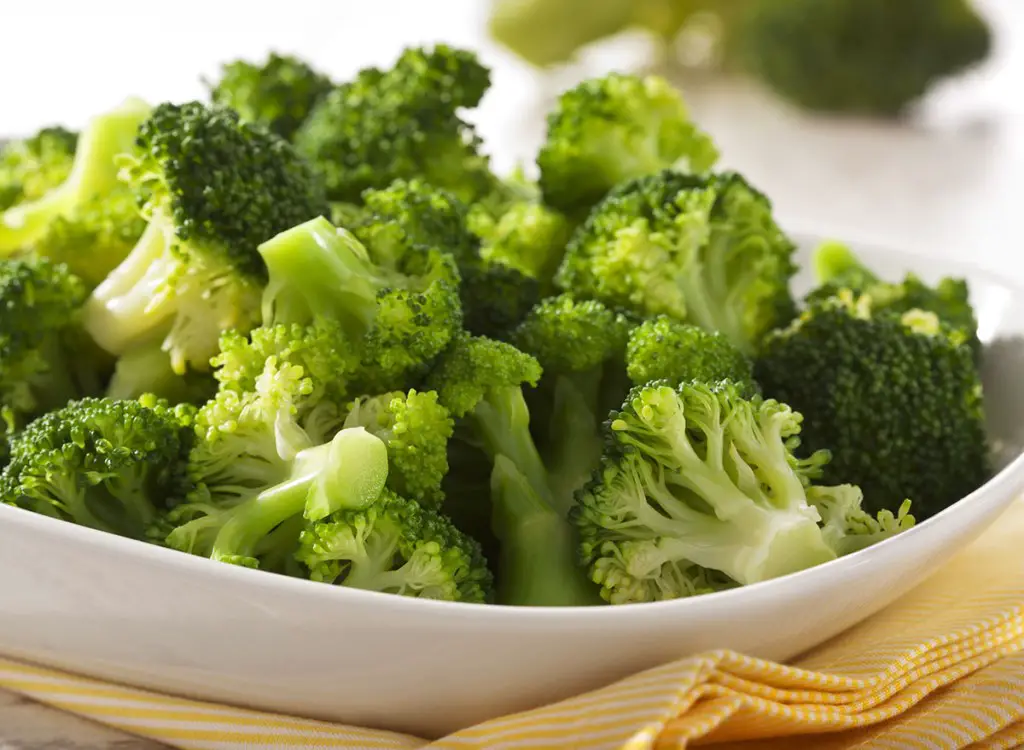 Broccoli is basically the standard-bearer when it comes to superfoods, Bremner tells Eat This, Not That! "You can't beat its combination of vitamins A, C, and E, all of which are known to help boost immune function. Vitamin A, in particular, may help cut your risk of COVID-19, Bremner points out, in that it supports healthier internal tissues, including the lining of the respiratory tract. And as an extra-added bonus, vitamin A may be instrumental in helping you lose weight this winter. 6) Yogurt Yogurt is rich in protein, vitamins, and trace elements, all of which are necessary for maintaining optimal immune response. Perhaps more importantly, yogurt is a great source of probiotics, which help support the gut microbiome, which is, itself, critical to supporting immune function, according to Bremner. Bonus points if you select Greek yogurt, which is even higher in protein than other yogurts 7) Sauerkraut Sauerkraut is another food that supports the immune system via the gut microbiome. What makes sauerkraut so powerful as an immune system supporter, according to Galvin, is the fact that it is fermented. Fermented foods are a great source of good bacteria for the gut. In addition, fermentation enhances the antioxidant properties of the cabbage sauerkraut is made from. The opinions expressed here by Bergen Review Media columnists are their own, not those of Bergenreview.com.  All meditation is created equal, right? You sit, with your eyes closed, and concentrate on deep breathing. Not necessarily. Some types of meditation can help calm your mind, while others focus on improving mental clarity, while others help improve deep breathing and wellness. Regardless of your ultimate goal with meditation, it will help improve overall well-being and have a calming effect on you. It’s the place where you can sit for just 10 minutes, and gain more insight into your mind and how it works. But what types of meditation are best for you, and which ones will deliver the goals/outcomes you want to see? Consider a few of these different types of meditation if you’re new to meditation and want to improve your mind, body, and spirit. Types of meditation When it comes to what kind of meditation to start with, always consider your needs, goals, and personal preferences. It also doesn’t hurt to give all of the following types of meditation practices a try. Instead of letting someone else tell you what kind of meditation to practice, see for yourself. The type of meditation practice you choose may also depend on your learning style. If you want to learn with a teacher or at a meditation retreat, certain forms of meditation will be better suited for you than others. If you’re interested in learning meditation on your own at home, start with a simple practice that allows you to use a guided meditation app. Open Monitoring This form of meditation focuses on keeping your attention on an object, without judgment surrounding it. You’ll focus on clearing preconceived notions, ideas, perceptions, and attachments to that object. Therefore, you don’t focus on the ways you believe it smells, looks, and feels; instead, you focus on the object, with a clear frame of mind and no conceptual bias before seeing it. The sole purpose is for non-reactive monitoring. This helps you learn how to be less judgmental outside yourself as well. At work, meeting new people, in new friendship groups, or even when you’re going to a local event you’re invited to, you’ll learn to arrive at these places, and just enjoy the environment and the people there. You don’t take any preconceived ideas or notions with you, and only let them form after the fact. Loving Kindness This form of meditation, loving-kindness meditation, is also known as Metta meditation; your focus is to cultivate loving feelings and kindness towards the things, people, and society around you. You don’t have enemies or external stresses. Instead, you focus on loving thoughts, thoughts of kindness, and making peace with everything and everyone around you. Practitioners of this type of meditation are open to external loving and kindness and accept it from others. Towards your loved ones, strangers, or even your boss/coworkers. You want to build a better world around you and focus on loving, kindness, and cultivating an environment of peace that surrounds you. Focuses on reducing anger, frustration, stress, resentment, and interpersonal conflicts, are top priorities when practicing this type of meditation. Mindfulness Mindfulness meditation is another one of the primary types of meditation that will help improve yourself from within. This form of meditation helps you to remain aware of the here and now, rather than focusing on what’s to come, or what has already happened. You’re focusing on remaining mindful of the thing you are doing, or the location you are at right now. You are not thinking about what will come next, where you have to be after work, or what time you have to pick up the kids. Your primary focus is on what you are doing, regardless of the level of importance, and learning to let go of things that are not right in front of you. It’s also a great type of meditation for beginners. You can do this almost anywhere. If you are stuck at the doctor’s office, don’t think of it as being stuck. Instead, focus on clearing your mind. Focus on your health and wellness. Think about improving yourself with the visit you’re going to have with the doctor. If you’re at a long line at the grocery store, you’ll focus on waiting and patience. You aren’t focused on the drive home, or unloading the groceries. Just focus on being present, and being where you are, when you are there. Vipassana (Insight) Vipassana is a type of meditation that is very similar to mindfulness. It’s a tradition from Tibetan Buddhism that translates to “insight” in English. The goal of insight meditation is to delve into the body and mind’s connection through contemplative practice. During this meditative practice, you practice being “the watcher.” The watcher is a non-judgemental open awareness of thoughts, sensations, and feelings that come and go through consciousness. Often, placing this awareness on the breath is the vehicle to reach this meditative state. With enough practice, it’s possible to get a glimpse of “the watcher.” You can begin to see your open-awareness as just another experience in consciousness. Body Scan This is one of the best types of meditation for scanning oneself, your body, and encourages practitioners to find areas of tension from within. Body scan meditation is also often referred to as progression meditation. Its primary goal is to help you alleviate tension, improve the muscular system, and focus on relaxation sessions. You’ll typically start at one end of your body and work your way through the body. Throughout the practice, find areas of tension, and focus on targeting relaxation and relaxing thoughts to those areas. This form of meditation can help improve chronic pain, help alleviate tension and stress, and improve muscular and skeletal system pain over time. It’s also a more accessible practice to learn for beginners as it engages your attention more than other types of meditation. Kundalini Yoga This form of physical activity or meditation, focuses on the mantras alongside deep breathing techniques. You concentrate on deep breathing, to help “eliminate toxins.” This is what is claimed, but we prefer the more scientific benefits around Kundalini, such as removing harmful thoughts from within. You’ll breathe slowly and deeply when you’re engaged in this physical meditation. You’re here to focus on breathing in and breathing out, and you’re trying to eliminate the clutter and any other thoughts that come into the mind while you’re partaking in this form of yoga and meditation. This type of meditation helps reduce levels of anxiety, helps with relaxation, and improves emotional flexibility to block out the external negativities around you. Plus, you’re getting in some physical activity as well, so it’s beneficial for the mind, body, and overall well-being. Transcendental With this type of meditation, you’re focused on the spiritual aspects of improving yourself. You’ll remain seated and focus on deep breathing techniques when performing transcendental meditation. Focus is on a specific mantra or a focused-word intended to help improve oneself and positive perceptions about yourself.
You’re focused on transcending and rising above your current state when engaging in this meditation. You want to take yourself to a higher level, and improve your self-value and worth with the positive mantra you’re repeating. The more you say it, the more you will believe it, and transcend into a deeper, better state over time. With Transcendental Meditation, you are given a mantra from a licensed teacher. The mantra acts as a vehicle to help you get to a meditative state. One of the downsides of this type of meditation is that it costs a lot of money to learn. Your turn These aren’t the only types of meditation to help improve your overall well-being, mind, body, and spirit. They are just some of the most popular types of meditation that practitioners engage in. Regardless of your level, what you want to improve, or where you are in life, these are some of the best meditative practices, to help you improve your mind, way of thinking, and way of perceiving the world around you, while improving the inner thoughts you have about yourself along the way. If you’re new to meditation and don’t know where to start, try Declutter The Mind. It offers a new guided meditation practice every day and offers a 30-day meditation course for beginners, which will introduce you to mindfulness meditation. Is there a meditation type you prefer or like? Let us know in the comments below. This article originally appeared at Declutter The Mind 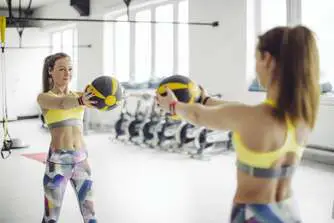 Doing ab exercises with just your body weight can be challenging in itself. But when you bring extra pounds into the equation, it's a whole new kind of burn. As celebrity trainer Gunnar Peterson told POPSUGAR in a previous interview, the secret to great abdominals is "working consistently, working in different planes of motion, and adding weights to your abdominal work." Ahead, check out exercises to target your abs with a medicine ball specifically — because medicine balls are easy to hold and even easier to store. Class FitSugar host Anna Renderer also says they're great for working your hand-eye coordination. To get started, choose the weight that's best for you and your fitness level — here's how to do that — though we'd recommend anywhere from 6-15 pounds. Do note that this is not a workout; you can add some of these into your next core or full-body routine to really shred that six pack. Plus, watch an explainer video with more moves from Class FitSugar at the end. If you're looking for a true test of strength, check out this medicine ball circuit from Jillian Michaels. 5 Flat-Belly Moves Using a Medicine Ball
By Jody Braverman Reviewed by Andra Picincu, CN, CPT 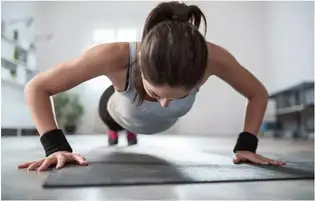 The more you challenge your muscles, the faster they'll grow. You don't need an expensive gym membership to gain muscle mass. With just a few pieces of equipment or your own body weight, you can do challenging home workouts that will build muscle fast. You just need to know the important factors involved in muscle gain, and you can make them work for you anywhere you choose to work out. Tip To build muscle fast, you need to challenge each muscle group with high-volume, twice-weekly workouts. Equipment for Home Workouts Do you really need equipment to build muscle and strength? According to Al Kavadlo, CSCS, the answer is a resounding no. Classic calisthenics exercises, such as pushups, pullups and squats, are enough for the beginner to start building muscle quickly at home. For the more advanced athlete, progressive variations can keep your muscles challenged and growing for years, Kavadlo says. But some people like using equipment, and that's fine too. You can outfit your home workout space with the essentials — or more, depending on your budget — that will allow you to do a variety of fun and challenging exercises in your home workout. Consider using:
Fastest Way to Build Muscle There's good news and bad news about building muscle fast when you're just starting a resistance-training program. The bad news is that during the first few weeks of your program, you might not make any gains at all. A 2016 study in the Journal of Physiology found that while muscle damage — necessary for hypertrophy, or muscle growth — was highest among untrained subjects in the first three weeks of a resistance-training program, it was not associated with hypertrophy. This is because muscle protein synthesis during this time is mainly directed at repairing the damage, rather than building mass. As the body adapts to exercise, there is less muscle damage after training sessions and greater muscle growth. The study researchers concluded that hypertrophy only occurs after accumulated intermittent increases in muscle protein synthesis. Rate of Muscle Gain The good news is that you only have to wait about three weeks until your body starts building, rather than just repairing, muscle. After that period, you will put on muscle relatively quickly. According to strength and conditioning coach Eric Bach, beginners gain muscle at a faster rate than intermediate and advanced lifters. On average, the maximum rate of muscle gain for beginners is 1 to 1.5 percent of total body weight per month compared to 0.5 to 1 percent of body weight for intermediate lifters and 0.25 to 0.5 percent for advanced lifters. Of course, this depends on a lot of variables, including training intensity, body type and diet, among other things. Volume and Frequency Whether you're working out in a gym or at home, workout volume and frequency — in addition to your diet — are the biggest factors in building muscle fast. Although you should be conservative in the first few weeks while your body is adapting to exercise, after that you will build more muscle faster by working out often at a high intensity and with a high volume (sets and reps). Basically, the more you challenge your muscles, the more growth you'll stimulate in a shorter period of time. According to a 2017 systematic review and meta-analysis in the Journal of Sports Science, volume is crucial for hypertrophy. In the 15 studies analyzed, the researchers found that each additional set of an exercise led to an increase in muscle size. This dose-response relationship means that the more sets you can get in, the faster you'll see growth. Having access to your home gym makes this easier, because a workout is always just a few steps away. As for frequency, a 2016 meta-analysis and systematic review in Sports Medicine found that training each major muscle group twice a week proved more effective for hypertrophy than only training once a week. The researchers could not, however, determine if training muscle groups three times per week leads to greater increases, but if more volume leads to more hypertrophy, then it's safe to say getting in three workouts per week per muscle group certainly can't hurt. Optimal Repetition Range There are a lot of opinions on the best number of sets and reps to do and the best rest period length between sets to build mass. As far as reps go, the usual recommendation is eight to 12 per set for hypertrophy, with higher reps being more effective for muscular endurance and lower reps more effective for strength. However, it might not actually matter that much. A 2016 study in Journal of Applied Physiology found that whether participants lifted lower weight for more repetitions or more weight for fewer repetitions, there was no difference in the amount of muscle growth at the end of a 12-week total-body resistance-training program. When you're working out at home, it will mainly depend on your available equipment. If you only have your own body weight to work with, you'll need to do more reps to exhaust your muscles. Sets and Rest When you're starting out, aim for 10 to 12 sets per muscle group, per week. As you start to see results and your body adapts, you should add more sets for more volume. With this approach, you can build muscle at home and improve your overall fitness. In a 2019 study in Medicine and Science in Sports and Exercise, participants who performed five sets per exercise per body part achieved significantly more muscle growth than participants who performed one or three sets. In total, the group that saw the most gains performed 30 sets for the upper body and 45 sets for the lower body per week. Rest periods between sets for hypertrophy are generally 60 to 180 seconds. However, you may want to lean toward the end of that range. In an eight-week study published in the Journal of Strength and Conditioning Research in 2016, participants who rested three minutes between sets gained more mass than participants who rested one minute, even when all other program variables remained the same. Tip Rest days are crucial for gaining mass. Your muscles grow between your workouts not while you're training them. Allow adequate rest between training sessions for the same muscle group. If you feel that you're getting weaker, not stronger, and you feel fatigued, you're not allowing enough recovery time. Best Exercises for Fast Gains Now the really confusing part — which exercises should you do to build muscle at home? The exercises you choose can be either compound, or multijoint, moves like squats and pullups, or they can be isolation, or single-joint, exercises like biceps and hamstrings curls. Which is better for hypertrophy? This is hotly debated in the fitness field, but according to research, both are equally effective. In a 2015 study published in the Asian Journal of Sports Medicine, 29 male participants trained the biceps using either lat pulldowns, a compound exercise, or biceps curls, an isolation exercise. At the end of 10 weeks, there was no difference in results between the compound and isolation group. The researchers concluded that exercise selection should be based on individual preference, time commitment and available equipment. Compound Body Weight Exercises You're not going to have as much variety at home as at the gym — no machines, maybe not even dumbbells or resistance bands. In that case, compound exercises that use large muscle groups and activate a lot of muscle fibers at once are going to be your best bet. Calisthenics expert and author Paul Wade recommends these exercises for your home body weight workout:
Of course, these are pretty challenging, and you may not be here quite yet. Start with the basic variation of each exercise and add on challenge and complexity as you get stronger. If you do have resistance equipment at home, you can do heavy squats, dead lifts, military presses and other classic lifts that build mass. The key is to continue to progressively load the muscles, which is what will encourage the most muscle growth ASAP and over time. How Many Days a Week Should I Work Out to Build Huge Muscles? Workout frequency is a much-debated topic in the fitness world. Is more better? Or do muscles need more recovery to reach their full size potential? The answer is, unfortunately, not cut and dried. While research reveals some benefit to higher training frequencies, it may be total volume that makes more of a difference. Ultimately, it's whatever works best for your own body. Training Frequencies Explained Training frequency is how often you train a single muscle group each week. There are many popular schools of thought on this. According to competitive bodybuilder Doug Brignole, Arnold Schwarzenegger used to train each body part three times a week: chest, shoulders and back on Mondays, Wednesdays and Fridays, and arms and legs on Tuesdays, Thursdays and Saturdays. That was his bodybuilding training frequency of choice — or at least one of them — and it worked for him. On the other end of the spectrum, renowned strength coach Charles Poliquin touted the German Volume Training method in which each muscle group is worked only once per week in a very specific volume — 10 sets per exercise. According to Poliquin, this training frequency helped Canadian weightlifter and Olympic silver medalist Jacques Demers build his massive thighs, and it was used by professional bodybuilder Bev Francis in her early career to increase muscle mass. Workout Frequency vs. Volume You can't talk about training frequency without also discussing training volume. Training volume is the amount of work you do in each workout — the number of sets and reps. For example, Brignole explains that Schwarzenegger and his counterparts used to do 20 sets per body part per workout — 60 sets per week. That's quite a high a volume. Poliquin's German Volume Training method only includes 10 sets of a single exercise per body part per week, which is significantly less than Schwarzenegger's routine. What the Research Says If you find such disparity confusing, scientific findings aren't going to do much to clarify. A study published in 2018 in The Journal of Strength and Conditioning concludes that doing eight sets per body part twice a week had only a slight hypertrophic benefit over doing 16 sets once a week. A 2018 study featured in PeerJ compared the effects of equal-volume once-weekly or twice-weekly training sessions on muscle gain. The group training once a week had significant increases in biceps (elbor flexor) muscle thickness. But a study published in 2015 in the Journal of Sports Medicine and Physical Fitness showed no differences in hypertrophy between equal-volume workouts performed either once or twice weekly. Another study published in Applied Physiology, Nutrition and Metabolism in 2018 determined that both a high-frequency, low-volume and high-volume, low-frequency training program increased lower body mass, but only the high-volume, low-frequency plan increased upper body mass. Still More Research Yet more research muddies the waters. A study published in 2018 in the Journal of Strength & Conditioning Research concluded that high-frequency training volume was no more effective than low-volume training frequency on hypertrophy. On the other hand, another 2018 study in the Journal of Strength & Conditioning Research found that there were significant hypertrophic benefits of high-frequency training for a group that performed five total-body workouts each week compared to a group that worked out each muscle group only once a week. And an additional study published in 2016 in the International Journal of Exercise Science showed that there was no difference between equal-volume high- versus low-frequency training. Making Sense of It One wonders if there is a real answer among all this research. There are many variables to consider: the training status of the study participants (trained versus untrained), the methods used to assess growth (lean body mass versus muscle thickness) and the relative difficulty of measuring hypertrophy versus strength, which tends to have much cleaner results, according to competitive powerlifter and trainer Greg Nuckols. Nuckols conducted extensive analyses of the research on bodybuilding training frequency and found that untrained lifters saw better results from higher training frequencies than did trained lifters. And in studies that assessed hypertrophy using lean muscle mass versus muscle thickness, higher frequencies also tended to have a greater hypertrophic effect, according to Nuckols. Overall, higher-frequency training had significant benefit over low-frequency training; however, Nuckols notes that this benefit was smaller for trained lifters. Getting to the Point The goal of lifting weights is to stimulate muscle protein synthesis, the post-workout state in which your body is creating muscle protein at a higher rate. Nuckols surmises that higher frequencies are more effective because they catalyze muscle protein synthesis more often throughout the week. Whether or not more frequent sessions should be low volume or high volume is less clear. There is a dose-response relationship between training volume and muscle growth; more sets lead to greater muscle hypertrophy, according to a systematic review and meta-analysis published in 2017 in the Journal of Sports Sciences. If you do more per-session volume, muscle protein synthesis is increased and extended, explains Nuckols. Because of that, it's unclear whether more frequent lower volume workouts are more or less effective than less frequent, higher volume workouts. What Should You Do? Ultimately, the answer is to do as much as you have time for but don't overdo it — which leads to overtraining and injury. If you're working out 6 days a week, you're not going to be able to do as much volume per session without it backfiring. If you only train once a week, you may find that you're fatiguing before you can get in as much volume as you'd like. Therefore, your sweet spot might be somewhere in between. If you're not seeing the results you want with your current routine, first try adding frequency without adding volume, suggest Nuckols. Once you assess your body's response and ability to recover, you can add volume to each session. Other Training Tips Frequency and volume aren't the only factors involved in building big muscles. Rest periods between sets are also important. One to three minutes is the norm, but a study published in 2016 in the Journal of Strength and Conditioning Research showed that participants who rested three minutes between sets gained more muscle than those who rested only one minute, even though the workouts were otherwise identical. Your nutrition is critical. Even if you found just the right bodybuilding training frequency, if you're not getting enough calories and macronutrients, you won't put on mass. To build muscle, explains body transformation expert Michael Matthews, you need to be in a calorie surplus and consume adequate protein and carbs. This gives your body the energy and raw materials it needs to build muscle. Last, recovery is just as important as the work you do in the gym. If you sacrifice proper recovery for more gym sessions, you will sabotage your efforts. If you add frequency and find that your workouts suffer, drop the frequency back down. How to Make Your Arms Big Really Fast Although it's impossible to naturally achieve huge muscle growth in just a few weeks, there are some steps you can take to dramatically speed up your progress. Your exact rate of muscle growth is largely determined by gender, age, body type and genetics. Over the course of a year, you'd be doing well if you steadily gained 0.4 pounds of muscle per month, but there are some things you can do to stack the deck in your favor and make gains as quickly as possible. Exercise, Recovery and Nutrition Step 1 Complete one or two resistance training workouts per week, targeting your biceps, triceps and shoulders. Use free weights or cable weight machines to perform one or two exercises for each muscle group. Regular curls, hammer curls and chin-ups will target the biceps. For the triceps, body dips, dumbbell kickbacks and triceps extensions will be effective. Shoulder exercises include overhead presses, lateral raises, shrugs and reverse flies. Step 2 Do three to six sets of each exercise using a weight you can only lift six to 12 times using perfect form. A 2004 article published in the "Journal of Sports Medicine" concluded that the optimal load for muscle growth was between 80 and 95 percent of your 1-Repetition Max. A 1RM is the amount of weight you can safely lift for only one repetition, unassisted. Step 3 Add multi-joint compound exercises to your lifting routine. Limiting yourself to exercises that only target one muscle at a time is not the best way to gain size, even for that muscle. Doing compound exercises like pushups, squats and compound rows release more anabolic hormones which are key for protein synthesis within muscle cells. Step 4 Rest each muscle group for at least 24 hours, but preferably 48 hours or more before working it again. Full muscle recovery is key to muscle growth, so the belief that lifting more frequently will result in faster growth is flawed. Although it is important to stress your muscle fibers during a workout, the actual growth only occurs during the rest and recovery phase, and ideally, you want to give your body a full 48 hours to do its work. Step 5 Get a full night's sleep every night. Sleep is important for muscle growth because that's when the body produces hormones that stimulate protein synthesis. Step 6 Consume enough protein daily and vary your protein sources; 1.6 to 1.7 g of protein per kilogram of body weight per day is recommended. It's important to choose a variety of protein sources so that you get adequate amounts of all of the essential amino acids. The amino acid leucine is especially important to muscle growth. Healthy sources of protein include poultry, fish, eggs, nuts, seeds and legumes. Things You'll Need
Tip Eat a small meal or snack that combines protein and carbohydrate immediately before or after a workout, to optimize potential muscle growth. Remember that in order to gain weight, you'll need to eat more total calories. Just beware of consuming too much saturated fat. Warning Always use proper form when exercising. Anabolic steroids are not deemed safe and should not be used.  Most of daily activities — that are not totally mindless — will sharpen your mind when practiced over a year. This is the power of the compound effect. Even if you engage your intellect only marginally in some activity, it can bring significant effects over a year. I practice(d) most of the below activities for at least a year. It’s hard to estimate their effect of my brain’s acuteness, but I got some interesting results that speak for themselves. 1. Learn new knowledge Our capacity for learning is astounding. In the last few years I studied multiple topics, most of them for the first time in my life: self-publishing, personal development, habits development or online marketing. It’s not about becoming an expert (especially not in 10 minutes a day), but about the web of associations your brain creates. Now I get ideas regarding personal development while reading a scripture, or a thought about how a brain works pops out when I study my website traffic. 2. Consolidate old knowledge For about 2 years I had been studying professional documentation learning about databases. I had been working with databases at that moment in time for more than 8 years, but I had very little formal knowledge (two 6-month courses on university). I passed three professional exams, obtained two certificates and got a better job (35% higher salary). All of that came from 10-minute study sessions. 3. Learn new skills One skill I deliberately practiced for 10 minutes a day has been speed reading. I quickly doubled my reading speed and maintained my skill at this level. Thanks to those practices I read a few dozen books I wouldn’t have read otherwise. 4. Practice gratitude I keep three gratitude journals. Filling them with my entries takes about 10 minutes. This activity will not only sharpens your brain, it will improve EVERYTHING in your life. Gratitude makes your brain positive and when your brain is positive: “Every possible outcome we know how to test for raises dramatically.” — Shawn Achor I tested it on myself. It works. For everything indeed. 5. Meditate Studies had confirmed that meditation improves performance and productivity. I suppose it sharpens brain as well. Surely, it magnifies your self-awareness and self-knowledge is one of the foundations of success. “Success in the knowledge economy comes to those who know themselves — their strengths, their values, and how they best perform.” — Peter F. Drucker 6. Journal. Thinking in writing has this magical quality of clarifying your thoughts. What was a tangled web of incoherent associations in your head becomes on paper a clear and concise project/ plan/ train of thoughts/ discovery. It’s also great for gaining self-knowledge. 7. Exercise Ancient philosophers knew that already and modern research confirmed common sense: A sound mind in a sound body. People who exercise regularly have better cognitive abilities. 8. Listen to different music I mean, a different kind of music at every session. The nature of connection between music and brain performance is still an enigma for scientists, but one thing we know for sure: it’s powerful. I’ve seen an awesome documentary about how old people with dementia living in a vegetative state got animated when listening to a music from their youth. And different kinds of music activate different part of our brains. 9. Listen to podcasts You may learn something. You may hear some fascinating stories or facts. The best in this activity is that you can do it in background while doing something else (chores, workout, walking, etc.) 10. Solve puzzles There is a plentiful of logic games out there. Don’t focus on getting to another level. Instead try a new game every week (or even every day). 11. Solve real problems I work in IT support in my day job (applications, databases and servers maintenance). I HAVE TO solve real-life problems every single day. I had no idea what it meant for my creativity and attitude till I started studying personal development. Most people stay stuck in “I can’t” attitude. I don’t. Finding a way out is my second nature. Brainstorming, narrowing down options, trial and error approach — they are for me as natural as breathing. Admittedly, I did it for a lot more than 10 minutes a day. 12. Come up with ideas Ask a question and brainstorm 10 different answers. Preferably to some practical problem. Even better if it pertains to your life. Claudia Azula swears that idea generation train your brain like a good workout trains your body. Bonus: write them all down (see #6 above). 13. Use your non-dominant hand for daily exercises Brush your teeth, answer the phone or do any other everyday trivia. It’s known that cerebral hemispheres control one side of your body each. When you use your non-dominant hand neurons run through your less used hemisphere. It’s sharpening your brain in my dictionary. 14. Learn new words Extending your vocabulary expands your mental horizons. Your vocabulary is like a set of filters your brain uses to process all the sensual impulses and channel them to your conscious mind. Article contributed by Christina Gitto for Bergen Review Media  There are many factors that are used to determine your car insurance premium, including your age, where you live, the type of vehicle you drive, and your driving record. Your profession also affects your car insurance premiums. Professionals who work in high-stress environments, such as health care workers and first responders, make more insurance claims than the average driver and may have higher insurance premiums. Frontline workers spend their days in chaotic work environments and often get behind the wheel feeling stressed. This distracted driving causes more at-fault accidents, causing car insurance premiums to go up. Reducing at-fault accidents not only prevents post-accident rate hikes but can lead to safe driver discounts. Frontline workers are twice as likely to make an at-fault insurance claim than the average driver due to the high-stress environment they’re in. As a result our team created this guide that would make a great additional resource for your readers who want to destress before getting behind the wheel. Health care workers and first responders are under a lot of stress as they battle to save lives every day, but especially so during the COVID-19 pandemic. If you’re a frontline worker, stress management is more important than ever before, especially when it comes to safe driving. Doctors, surgeons, and other health care workers are twice as likely to make an at-fault insurance claim than the general population, and distracted driving plays a big part in this high rate of accidents. Reducing stress levels during the day can help you stay focused and avoid distractions at all costs. How to Reduce Stress For health care workers, stress management can be a crucial strategy for handling emergencies. A recent study found that frontline workers providing care to suspected COVID-19 patients have a high risk of experiencing mental health outcomes like anxiety, distress, and depression. While some of these tips may seem obvious, it can be hard to practice self-care in the face of so many external pressures. But incorporating them into one’s routine can benefit more than just your stress levels. Self-Care Basics
Starting the Day Prepared Effective stress management can begin the moment you wake up. Before you open your eyes, you may be thinking about the stressful day ahead, as well as concerns about your patients. This mental strain can wear you down before you reach work, so we’ve compiled stress management tips you can incorporate in the early hours of the day.
Managing Stress During the Day Learning how to manage stress during the day is critical for frontline workers. Each demanding shift goes by in a blur, with constant demands on time, energy, and headspace that can increase stress and anxiety.
Reducing Stress Before Driving If you get behind the wheel while stressed, you could increase the chance of driving while distracted, getting into an accident, and filing an at-fault insurance claim. So here are a few practices that can help alleviate stress before you turn on the car.
Reducing Stress While Driving It’s easy for stressful thoughts to creep back in while you’re driving. If you’re heading home during rush hour traffic, other drivers on the road may cause your cortisol levels to spike. Whether you’re on a crowded interstate or in stop-and-go traffic in the congested downtown core, don’t drive distracted, and practice these stress management techniques while driving.
The Bottom Line With the novel coronavirus the demand for health care is rampant. Frontline workers are working longer shifts and are being exposed to health risks every day. As health care professionals battle the pandemic, practicing stress management before driving to or from work, is more important than ever. We should all do our part in helping frontline workers reduce their stress levels by showing them gratitude for their continued efforts in the face of this global pandemic. Also, help keep your loved one safe by following social distancing guidelines and wearing protective equipment whenever possible to slow down the spread of COVID-19.  By Jason Aten Tech columnist Here's what you should know about contact-tracing, and how the tech giants are planning to use it against a pandemic. Apple and Google see eye-to-eye on almost nothing. Their approach to developing hardware and software is almost the exact opposite, not to mention the way each thinks about user privacy. It seems a most unlikely partnership then that the two tech giants have joined forces to develop a standard to aid public health organizations in the fight against Covid-19. Specifically, the companies announced on Friday that they would both build software into their devices that can be used to help contact-tracing, a necessary tool for slowing the spread of a pandemic. In a statement, the companies announced: "In this spirit of collaboration, Google and Apple are announcing a joint effort to enable the use of Bluetooth technology to help governments and health agencies reduce the spread of the virus, with user privacy and security central to the design." One of the things that this reminds us is that while the two companies are fierce rivals in almost every aspect of their businesses, these are extraordinary times. Apple and Google account for the operating systems that power some 99 percent of all mobile devices, putting them in a unique position to help. Public health officials have said that contact-tracing is an important tool, especially in helping all of us get back to normal--or whatever the new version of normal looks like. Contact tracing is simply taking the people who have been diagnosed or tested positive, and then identifying anyone they may have come in contact with. Those individuals can then be notified and tested, or isolate until it's no longer likely that they have been infected. The problem is that if you test positive, it can be difficult to identify all of the people you may have come into contact with. If, for example, you went to the grocery store over the weekend, it's entirely possible that you could have come in close enough contact to spread the coronavirus before you even knew you were contagious. The technology being built by Google and Apple would allow your mobile devices to communicate in a way that the people you came into contact with could later be notified. The first step is the development of an API by both companies, that will allow the development of iOS and Android apps that can be used for individuals to opt-in.
Then, both companies plan to introduce technology that works with Bluetooth, which would allow contact tracing on a much larger scale down the road. Of course, people get a little nervous anytime technology companies start talking about things like this. That's fair considering that there is no shortage of tech companies that have built entire business models on monetizing our personal information. The companies acknowledge those concerns and addressed them directly in their joint statement: "Privacy, transparency, and consent are of utmost importance in this effort, and we look forward to building this functionality in consultation with interested stakeholders. We will openly publish information about our work for others to analyze." While Google doesn't exactly have a great track record when it comes to user privacy, Apple has long made it a core of its brand identity. The companies have even released a series of white papers detailing how they intend to protect privacy while still providing the necessary information to public health officials. If nothing else, the joint effort is a reminder of how important of a role technology plays in our lives, and how important it will be in getting life back to normal. There are very smart people at both Apple and Google, and right now we're counting on them to do what they can to help.  Adjusting to life under siege by SARS-CoV-2 has not been easy; each new day brings with it novel guidelines and restrictions aimed at keeping populations safe as cases soar worldwide. Many of us—most of us, I hope—are staying at home as much as possible to give hospital workers a fighting chance at saving the lives affected by COVID-19. Still, there is one place few of us can avoid: the grocery store. Everyone needs food, and while grocery delivery is still available in some places—albeit with weeks-long wait times—most of us will be forced to venture out sometime in the next month (or more) to restock our shelves. It’s a daunting thought, given how trafficked a grocery store is, and many shops are taking measures to help keep shoppers and clerks safe as both sides of the cashier stand navigate this tricky business of stopping the spread. Sneeze guards have been installed in many stores, for example, to protect cashiers who have no choice but to stand fewer than six feet away from customers. Strategically-placed floor tape in other stores helps customers visualize the amount of distance they need to maintain from one another. In some shops, lines snake around the block as a limited number of customers are allowed in at a time. And so on. Not all stores are instituting such measures, however, and even if you shop at one that is, there are additional behaviors you should ditch/adopt to help keep yourself and other shoppers safe. Below, experts share a few new guidelines to follow so as to avoid becoming the Typhoid Mary/resident jerk of your local grocery store. 1. ORDER DELIVERY IF POSSIBLE “Ideally, it would be best to stay home, physically isolated, and to limit your exposure to others and their exposure to you as much as is possible,” says Dana Hunnes, PhD, RD, a professor at the UCLA Fielding School of Public Health, when I ask her whether or not we should be opting for delivery over in-person visits. If you do manage to get a delivery slot, ask neighbors or friends if there’s anything they need so as to maximize your shopper’s efficiency while helping others avoid the store, too. And be sure to tip well. (Very well.) These workers are helping you and risking themselves day after day, and many rely on tips to get through these tough times. So be thoughtful and tip a good percentage (most services let you do this online and/or through their app). 2. MAKE EACH VISIT COUNT Hunnes says it’s best to limit your shopping trips as much as possible by waiting until your list is long to hit the store. “Now is not the time to impulse buy and stand in line for one item you’re craving,” she says. As with delivery, you can combine lists with friends and neighbors so as to lower the overall number of shoppers flooding into stores, too. 3. DON’T WASTE PERSONAL PROTECTIVE EQUIPMENT Generally speaking, you shouldn’t suit up for a trip to the store. “Unless you are ill or immune-compromised, it is not recommended to wear any protective gear,” says Hunnes. “Right now healthcare professionals need all the PPE they can get as they are the frontline.” You can, of course, wear gloves, though Hunnes says you’re probably more likely to remember to wash your hands than you are to not touch things with gloves. You can also DIY something to cover your face, e.g. a bandana, but Hunnes warns this might not actually be all that helpful, either. “Wearing a mask may give you a false-sense of safety, and you may be more likely to touch your face to adjust the mask,” she says. Studies have shown that wearing surgical masks can help stop the spread of respiratory viruses to an extent, but doctors admit there isn’t a definitive answer as to whether or not you need to wear one. “Honestly, we aren’t sure how helpful these homemade masks and makeshift masks with bandanas and scarves are, but it’s better than nothing,” adds Sonia Vaidian, MD. 4. IF THERE’S A LINE OUTSIDE, MAINTAIN SOCIAL DISTANCING BEST PRACTICES That’s six feet in front of you, and six feet behind you, says Food Safety Coach Jeff Nelkin. No exceptions. 5. DON’T HOARD Yes, this is a scary time, and it’s tempting to take as much as you can at once so as to a) not have to go back and b) not run out of food in a worst case scenario. With that said, you may be taking food out of the cart of, say, an elderly or otherwise vulnerable person who took a real chance to get to the store. “Make a list and buy only what you need, or what you know you can actually eat during a set time period, so that you’re not taking from someone else who might need an item—and then you end up throwing it away because it went bad,” says Hunnes. If you do *accidentally* take more than you need, consider offering to share with friends or neighbors. 6. CHECK YOUR PRIVILEGE (AND CHECK THE LABELS AND TIME) Speaking of elderly customers, many stores are implementing senior hours (usually the first hour after the store opens) to make sure that elderly customers get what they need while being socially distant. You also should look up when your state provides and gives out SNAP (Supplemental Nutrition Assistant Program) and WIC (Women, Infants, and Children) benefits. (It’s usually the first of the month.) Unless a food emergency, try to avoid the supermarket on these first few dates. If you have to go, check the store labels when at the store during this time (and early in the month) to avoid buying products that are covered under these programs and opt for a different brand if possible and available, as those needing those items do not get to swap for substitutions. 7. DON’T TOUCH THE FREAKING PRODUCE “When you go to the produce section, everybody is doing like what they were doing before the virus—touching and squeezing everything,” says Nelkin. “We’re talking about 30 to 50 people that have made skin contact with these products by the end of the day.” Instead of engaging in this coronavirus-inappropriate behavior, Hunnes suggests visually assessing produce when possible. If this approach fails to give you the information you need, Nelkin suggests putting your hand inside a plastic produce bag and then grabbing what you want and squeezing, etc. “That way, you’re minimizing skin contact because you’re inverting the bag and using it as a glove,” he says. To protect yourself from produce potentially contaminated by less thoughtful patrons before you get to it, Hunnes recommends cleaning your hands after you touch the produce and then washing the produce as soon as you get home, before you put it in the fridge. 8. BE MINDFUL OF YOUR CONTACT WITH PACKAGED GOODS, TOO While you’re less likely to catch the coronavirus via contact with products, it is able to live for up to 24 hours on cardboard and 2-3 days on plastic. So, touch only what you’re fairly positive you’re going to add to your cart, wipe plastic goods down when you get home, and use hand sanitizer when you leave the store (before you get into your car) and then wash your hands after you unpack your groceries. 9. AVOID CROWDED AISLES If your grocery store isn’t limiting the number of customers allowed in at any given time, do your best to maintain six feet of distance regardless. “As much as humanly possible, try to shop during the least-crowded times and on the least-crowded aisles,” says Hunnes. “Keep your eyes open and your wits about you.” 10. DON’T DROP THE SCOOP If you’re buying from a bulk barrel, don’t be that guy/gal who drops the potentially contaminated scoop handle into the food, says Nelkin. To avoid making skin contact with that handle yourself, utilize the inverted produce bag trick from #5 above (or, gloves). 11. AVOID THE BUFFETS Nelson thinks these should be shut down, and suggests avoiding them where they are not. 12. PAY WITH A CREDIT CARD, NOT CASH Pay with your credit card, and then wipe it after you swipe it. “You cannot necessarily prevent full exposure (e.g. cleaning machines that you’re using, etc), but you can clean your own stuff (e.g. credit card, wallet, phone case) after you touch them,” says Hunnes. “Clean your hands before and after you clean the items, too.” For even fewer touchpoints, you can use Apple Pay on your phone where possible (e.g. Trader Joe’s) as well. 13. WIPE YOUR CART/BASKET AFTER YOU USE IT While you should definitely wipe down your cart or basket before you use it, it doesn’t hurt to be thoughtful and give one or the other a swift clean after you use it, too, because, well, kindness.  You already know that exercise is good for your body. But did you know it’s also effective in dealing with depression, anxiety, stress, and more? Exercise is not just about aerobic capacity and muscle size. Sure, exercise can improve your physical health and your physique, trim your waistline, improve your sex life, and even add years to your life. But that’s not what motivates most people to stay active. People who exercise regularly tend to do so because it gives them an enormous sense of well-being. They feel more energetic throughout the day, sleep better at night, have sharper memories, and feel more relaxed and positive about themselves and their lives. And it’s also powerful medicine for many common mental health challenges. Regular exercise can have a profoundly positive impact on depression, anxiety, ADHD, and more. It also relieves stress, improves memory, helps you sleep better, and boosts your overall mood. And you don’t have to be a fitness fanatic to reap the benefits. Research indicates that modest amounts of exercise can make a difference. No matter your age or fitness level, you can learn to use exercise as a powerful tool to feel better. Exercise and depression Studies show that exercise can treat mild to moderate depression as effectively as antidepressant medication—but without the side-effects, of course. As one example, a recent study done by the Harvard T.H. Chan School of Public Health found that running for 15 minutes a day or walking for an hour reduces the risk of major depression by 26%. In addition to relieving depression symptoms, research also shows that maintaining an exercise schedule can prevent you from relapsing. Exercise is a powerful depression fighter for several reasons. Most importantly, it promotes all kinds of changes in the brain, including neural growth, reduced inflammation, and new activity patterns that promote feelings of calm and well-being. It also releases endorphins, powerful chemicals in your brain that energize your spirits and make you feel good. Finally, exercise can also serve as a distraction, allowing you to find some quiet time to break out of the cycle of negative thoughts that feed depression. Exercise and anxiety Exercise is a natural and effective anti-anxiety treatment. It relieves tension and stress, boosts physical and mental energy, and enhances well-being through the release of endorphins. Anything that gets you moving can help, but you’ll get a bigger benefit if you pay attention instead of zoning out. Try to notice the sensation of your feet hitting the ground, for example, or the rhythm of your breathing, or the feeling of the wind on your skin. By adding this mindfulness element—really focusing on your body and how it feels as you exercise—you’ll not only improve your physical condition faster, but you may also be able to interrupt the flow of constant worries running through your head. Exercise and stress Ever noticed how your body feels when you’re under stress? Your muscles may be tense, especially in your face, neck, and shoulders, leaving you with back or neck pain, or painful headaches. You may feel a tightness in your chest, a pounding pulse, or muscle cramps. You may also experience problems such as insomnia, heartburn, stomachache, diarrhea, or frequent urination. The worry and discomfort of all these physical symptoms can in turn lead to even more stress, creating a vicious cycle between your mind and body. Exercising is an effective way to break this cycle. As well as releasing endorphins in the brain, physical activity helps to relax the muscles and relieve tension in the body. Since the body and mind are so closely linked, when your body feels better so, too, will your mind. Exercise and ADHD Exercising regularly is one of the easiest and most effective ways to reduce the symptoms of ADHD and improve concentration, motivation, memory, and mood. Physical activity immediately boosts the brain’s dopamine, norepinephrine, and serotonin levels—all of which affect focus and attention. In this way, exercise works in much the same way as ADHD medications such as Ritalin and Adderall. Exercise and PTSD and trauma Evidence suggests that by really focusing on your body and how it feels as you exercise, you can actually help your nervous system become “unstuck” and begin to move out of the immobilization stress response that characterizes PTSD or trauma. Instead of allowing your mind to wander, pay close attention to the physical sensations in your joints and muscles, even your insides as your body moves. Exercises that involve cross movement and that engage both arms and legs—such as walking (especially in sand), running, swimming, weight training, or dancing—are some of your best choices. Outdoor activities like hiking, sailing, mountain biking, rock climbing, whitewater rafting, and skiing (downhill and cross-country) have also been shown to reduce the symptoms of PTSD. Other mental and emotional benefits of exercise Sharper memory and thinking. The same endorphins that make you feel better also help you concentrate and feel mentally sharp for tasks at hand. Exercise also stimulates the growth of new brain cells and helps prevent age-related decline. Higher self-esteem. Regular activity is an investment in your mind, body, and soul. When it becomes habit, it can foster your sense of self-worth and make you feel strong and powerful. You’ll feel better about your appearance and, by meeting even small exercise goals, you’ll feel a sense of achievement. Better sleep. Even short bursts of exercise in the morning or afternoon can help regulate your sleep patterns. If you prefer to exercise at night, relaxing exercises such as yoga or gentle stretching can help promote sleep. More energy. Increasing your heart rate several times a week will give you more get-up-and-go. Start off with just a few minutes of exercise per day, and increase your workout as you feel more energized. Stronger resilience. When faced with mental or emotional challenges in life, exercise can help you cope in a healthy way, instead of resorting to alcohol, drugs, or other negative behaviors that ultimately only make your symptoms worse. Regular exercise can also help boost your immune system and reduce the impact of stress. Reaping the mental health benefits of exercise is easier than you think Wondering just how much activity will give you a mental health boost? It’s probably not as much as you think. You don’t need to devote hours out of your busy day to train at the gym, sweat buckets, or run mile after monotonous mile. You can reap all the physical and mental health benefits of exercise with 30-minutes of moderate exercise five times a week. Two 15-minute or even three 10-minute exercise sessions can also work just as well. Even a little bit of activity is better than nothing If that still seems intimidating, don’t despair. Even just a few minutes of physical activity are better than none at all. If you don’t have time for 15 or 30 minutes of exercise, or if your body tells you to take a break after 5 or 10 minutes, for example, that’s okay, too. Start with 5- or 10-minute sessions and slowly increase your time. The more you exercise, the more energy you’ll have, so eventually you’ll feel ready for a little more. The key is to commit to some moderate physical activity—however little—on most days. As exercising becomes habit, you can slowly add extra minutes or try different types of activities. If you keep at it, the benefits of exercise will begin to pay off. You don’t have to suffer to get results Research shows that moderate levels of exercise are best for most people. Moderate means:
Overcoming mental health obstacles to exercise So now you know that exercise will help you feel much better and that it doesn’t take as much effort as you might have thought. But taking that first step is still easier said than done. Exercise obstacles are very real—particularly when you’re also struggling with mental health. Here are some common barriers and how you can get past them. Feeling exhausted. When you’re tired or stressed, it feels like working out will just make it worse. But the truth is that physical activity is a powerful energizer. Studies show that regular exercise can dramatically reduce fatigue and increase your energy levels. If you are really feeling tired, promise yourself a 5-minute walk. Chances are, you’ll be able to go five more minutes. Feeling overwhelmed. When you’re stressed or depressed, the thought of adding another obligation can seem overwhelming. Working out just doesn’t seem doable. If you have children, managing childcare while you exercise can be a big hurdle. Just remember that physical activity helps us do everything else better. If you begin thinking of physical activity as a priority, you will soon find ways to fit small amounts into a busy schedule. Feeling hopeless. Even if you’re starting at “ground zero,” you can still workout. Exercise helps you get in shape. If you have no experience exercising, start slow with low-impact movement a few minutes each day. Feeling bad about yourself. Are you your own worst critic? It’s time to try a new way of thinking about your body. No matter your weight, age or fitness level, there are others like you with the same goal of getting fit. Try surrounding yourself with people in your shoes. Take a class with people at a variety of fitness levels. Accomplishing even the smallest fitness goals will help you gain body confidence. Feeling pain. If you have a disability, severe weight problem, arthritis, or any injury or illness that limits your mobility, talk to your healthcare provider about ways to safely exercise. You shouldn’t ignore pain, but rather do what you can, when you can. Divide your exercise into shorter, more frequent chunks of time if that helps, or try exercising in water to reduce joint or muscle discomfort. Getting started exercising when you’re anxious or depressed Many of us find it hard enough to motivate ourselves to exercise at the best of times. When we feel depressed, anxious, stressed or have other mental or emotional problems, it can seem doubly difficult. This is especially true of depression and anxiety, which can leave you feeling trapped in a catch-22 situation. You know exercise will make you feel better, but depression has robbed you of the energy and motivation you need to work out, or your social anxiety means you can’t bear the thought of being seen at an exercise class or running through the park. So, what can you do? It’s okay to start small. In fact, it’s smart. When you’re under the cloud of an emotional disorder and haven’t exercised for a long time, setting extravagant goals like completing a marathon or working out for an hour every morning will only leave you more despondent if you fall short. Better to set achievable goals and build up from there. Schedule your workout at the time of day when your energy is highest That may be first thing in the morning before work or school, at lunchtime before the mid-afternoon lull hits, or for longer sessions over the weekend. If depression or anxiety has you feeling tired and unmotivated all day long, try dancing to some music or simply going for a walk. Even a short, 15-minute walk can help clear your mind, improve your mood, and boost your energy level. As you move and start to feel a little better, you’ll experience a greater sense of control over your well-being. You may even feel energized enough to exercise more vigorously—by walking further, breaking into a run, or adding a bike ride, for example. Other tips for staying motivated when you’re also struggling with mental health Focus on activities you enjoy. Any activity that gets you moving counts. That could include throwing a Frisbee with a dog or friend, walking laps of a mall window shopping, or cycling to the grocery store. If you’ve never exercised before or don’t know what you might enjoy, try a few different things. Activities such as gardening or tackling a home improvement project can be great ways to start moving more when you have a mood disorder—as well as helping you become more active, they can also leave you with a sense of purpose and accomplishment. Be comfortable. Whatever time of day you decide to exercise, wear clothing that’s comfortable and choose a setting that you find calming or energizing. That may be a quiet corner of your home, a scenic path, or your favorite city park. Reward yourself. Part of the reward of completing an activity is how much better you’ll feel afterwards, but it always helps your motivation to promise yourself an extra treat for exercising. Reward yourself with a hot bubble bath after a workout, a delicious smoothie, or with an extra episode of your favorite TV show. Make exercise a social activity. Exercising with a friend or loved one, or even your kids, will not only make exercising more fun and enjoyable, it can also help motivate you to stick to a workout routine. You’ll also feel better than if you were exercising alone. In fact, when you’re suffering from a mood disorder such as depression, the companionship can be just as important as the exercise. Easy ways to move more that don’t involve the gym
Don’t have 30 minutes to dedicate to yoga or a bike ride? Don’t worry. Think about physical activity as a lifestyle rather than just a single task to check off. Look at your daily routine and consider ways to sneak in activity here, there, and everywhere. Need ideas? We’ve got them. In and around your home. Clean the house, wash the car, tend to the yard and garden, mow the lawn with a push mower, sweep the sidewalk or patio with a broom. At work and on the go. Bike or walk to an appointment rather than drive, banish all elevators and get to know every staircase possible, briskly walk to the bus stop then get off one stop early, park at the back of the lot and walk into the store or office, take a vigorous walk during your coffee break. With the family. Jog around the soccer field during your kid’s practice, make a neighborhood bike ride part of your weekend routine, play tag with your children in the yard, go canoeing at a lake, walk the dog in a new place. Just for fun. Pick fruit at an orchard, boogie to music, go to the beach or take a hike, gently stretch while watching television, organize an office bowling team, take a class in martial arts, dance, or yoga. Make exercise a fun part of your everyday life You don’t have to spend hours in a gym or force yourself into long, monotonous workouts to experience the many benefits of exercise. These tips can help you find activities you enjoy and start to feel better, look better, and get more out of life. This article originally appeared on HelpGuide  Epidemiologist Larry Brilliant, who warned of pandemic in 2006, says we can beat the novel coronavirus—but first, we need lots more testing. Larry Brilliant says he doesn’t have a crystal ball. But 14 years ago, Brilliant, the epidemiologist who helped eradicate smallpox, spoke to a TED audience and described what the next pandemic would look like. At the time, it sounded almost too horrible to take seriously. “A billion people would get sick," he said. “As many as 165 million people would die. There would be a global recession and depression, and the cost to our economy of $1 to $3 trillion would be far worse for everyone than merely 100 million people dying, because so many more people would lose their jobs and their health care benefits, that the consequences are almost unthinkable.” Now the unthinkable is here, and Brilliant, the Chairman of the board of Ending Pandemics, is sharing expertise with those on the front lines. We are a long way from 100 million deaths due to the novel coronavirus, but it has turned our world upside down. Brilliant is trying not to say “I told you so” too often. But he did tell us so, not only in talks and writings, but as the senior technical advisor for the pandemic horror film Contagion, now a top streaming selection for the homebound. Besides working with the World Health Organization in the effort to end smallpox, Brilliant, who is now 75, has fought flu, polio, and blindness; once led Google’s nonprofit wing, Google.org; co-founded the conferencing system the Well; and has traveled with the Grateful Dead. We talked by phone on Tuesday. At the time, President Donald Trump’s response to the crisis had started to change from “no worries at all” to finally taking more significant steps to stem the pandemic. Brilliant lives in one of the six Bay Area counties where residents were ordered to shelter in place. When we began the conversation, he’d just gotten off the phone with someone he described as high government official, who asked Brilliant “How the fuck did we get here?” I wanted to hear how we’ll get out of here. The conversation has been edited and condensed. Steven Levy: I was in the room in 2006 when you gave that TED talk. Your wish was “Help Me Stop Pandemics.” You didn't get your wish, did you? Larry Brilliant: No, I didn't get that wish at all, although the systems that I asked for have certainly been created and are being used. It's very funny because we did a movie, Contagion-- We're all watching that movie now. People say Contagion is prescient. We just saw the science. The whole epidemiological community has been warning everybody for the past 10 or 15 years that it wasn't a question of whether we were going to have a pandemic like this. It was simply when. It's really hard to get people to listen. I mean, Trump pushed out the admiral on the National Security Council, who was the only person at that level who's responsible for pandemic defense. With him went his entire downline of employees and staff and relationships. And then Trump removed the [early warning] funding for countries around the world. I've heard you talk about the significance that this is a “novel” virus. It doesn't mean a fictitious virus. It’s not like a novel or a novella. Too bad. It means it's new. That there is no human being in the world that has immunity as a result of having had it before. That means it’s capable of infecting 7.8 billion of our brothers and sisters. Since it's novel, we’re still learning about it. Do you believe that if someone gets it and recovers, that person thereafter has immunity? So I don't see anything in this virus, even though it's novel, [that contradicts that]. There are cases where people think that they've gotten it again, [but] that's more likely to be a test failure than it is an actual reinfection. But there's going to be tens of millions of us or hundreds of millions of us or more who will get this virus before it's all over, and with large numbers like that, almost anything where you ask “Does this happen?” can happen. That doesn't mean that it is of public health or epidemiological importance. Is this the worst outbreak you’ve ever seen? It's the most dangerous pandemic in our lifetime. We are being asked to do things, certainly, that never happened in my lifetime--stay in the house, stay 6 feet away from other people, don’t go to group gatherings. Are we getting the right advice? Well, as you reach me, I'm pretending that I'm in a meditation retreat, but I'm actually being semi-quarantined in Marin County. Yes, this is very good advice. But did we get good advice from the president of the United States for the first 12 weeks? No. All we got were lies. Saying it’s fake, by saying this is a Democratic hoax. There are still people today who believe that, to their detriment. Speaking as a public health person, this is the most irresponsible act of an elected official that I've ever witnessed in my lifetime. But what you're hearing now [to self-isolate, close schools, cancel events] is right. Is it going to protect us completely? Is it going to make the world safe forever? No. It's a great thing because we want to spread out the disease over time. Flatten the curve. By slowing it down or flattening it, we're not going to decrease the total number of cases, we're going to postpone many cases, until we get a vaccine—which we will, because there's nothing in the virology that makes me frightened that we won’t get a vaccine in 12 to 18 months. Eventually, we will get to the epidemiologist gold ring. What’s that? That means, A, a large enough quantity of us have caught the disease and become immune. And B, we have a vaccine. The combination of A plus B is enough to create herd immunity, which is around 70 or 80 percent. I hold out hope that we get an antiviral for Covid-19 that is curative, but in addition is prophylactic. It's certainly unproven and it's certainly controversial, and certainly a lot of people are not going to agree with me. But I offer as evidence two papers in 2005, one in Nature and one in Science. They both did mathematical modeling with influenza, to see whether saturation with just Tamiflu of an area around a case of influenza could stop the outbreak. And in both cases, it worked. I also offer as evidence the fact that at one point we thought HIV/AIDS was incurable and a death sentence. Then, some wonderful scientists discovered antiviral drugs, and we've learned that some of those drugs can be given prior to exposure and prevent the disease. Because of the intense interest in getting [Covid-19] conquered, we will put the scientific clout and money and resources behind finding antivirals that have prophylactic or preventive characteristics that can be used in addition to [vaccines]. When will we be able to leave the house and go back to work? I have a very good retrospect-oscope, but what's needed right now as a prospecto-scope. If this were a tennis match, I would say advantage virus right now. But there's really good news from South Korea—they had less than 100 cases today. China had more cases imported than it had from continuous transmission from Wuhan today. The Chinese model will be very hard for us to follow. We're not going to be locking people up in their apartments, boarding them up. But the South Korea model is one that we could follow. Unfortunately, it requires doing the proportionate number of tests that they did—they did well over a quarter of a million tests. In fact, by the time South Korea had done 200,000 tests, we had probably done less than 1,000. Now that we've missed the opportunity for early testing, is it too late for testing to make a difference? Absolutely not. Tests would make a measurable difference. We should be doing a stochastic process random probability sample of the country to find out where the hell the virus really is. Because we don't know. Maybe Mississippi is reporting no cases because it's not looking. How would they know? Zimbabwe reports zero cases because they don't have testing capability, not because they don't have the virus. We need something that looks like a home pregnancy test, that you can do at home. If you were the president for one day, what would you say in the daily briefing? I would begin the press conference by saying "Ladies and gentlemen, let me introduce you to Ron Klain—he was the Ebola czar [under President Barack Obama], and now I’ve called him back and made him Covid czar. Everything will be centralized under one person who has the respect of both the public health community and the political community." We're a divided country right now. Right now, Tony Fauci [head of the National Institute of Allergy and Infectious Diseases] is the closest that we come to that. Are you scared? I'm in the age group that has a one in seven mortality rate if I get it. If you're not worried, you're not paying attention. But I'm not scared. I firmly believe that the steps that we're taking will extend the time that it takes for the virus to make the rounds. I think that, in turn, will increase the likelihood that we will have a vaccine or we will have a prophylactic antiviral in time to cut off, reduce, or truncate the spread. Everybody needs to remember: This is not a zombie apocalypse. It's not a mass extinction event. Should we be wearing masks? The N95 mask itself is extremely wonderful. The pores in the mask are three microns wide. The virus is one micron wide. So you get people who say, well, it's not going to work. But you try having three big, huge football players who are rushing for lunch through a door at lunchtime—they're not going to get through. In the latest data I saw, the mask provided 5x protection. That's really good. But we have to keep the hospitals going and we have to keep the health professionals able to come to work and be safe. So masks should go where they’re needed the most: in taking care of patients. How will we know when we’re through this? The world is not going to begin to look normal until three things have happened. One, we figure out whether the distribution of this virus looks like an iceberg, which is one-seventh above the water, or a pyramid, where we see everything. If we're only seeing right now one-seventh of the actual disease because we're not testing enough, and we're just blind to it, then we're in a world of hurt. Two, we have a treatment that works, a vaccine or antiviral. And three, maybe most important, we begin to see large numbers of people—in particular nurses, home health care providers, doctors, policemen, firemen, and teachers who have had the disease—are immune, and we have tested them to know that they are not infectious any longer. And we have a system that identifies them, either a concert wristband or a card with their photograph and some kind of a stamp on it. Then we can be comfortable sending our children back to school, because we know the teacher is not infectious. And instead of saying "No, you can't visit anybody in nursing home," we have a group of people who are certified that they work with elderly and vulnerable people, and nurses who can go back into the hospitals and dentists who can open your mouth and look in your mouth and not be giving you the virus. When those three things happen, that's when normalcy will return. Is there in any way a brighter side to this? Well, I'm a scientist, but I'm also a person of faith. And I can't ever look at something without asking the question of isn't there a higher power that in some way will help us to be the best version of ourselves that we could be? I thought we would see the equivalent of empty streets in the civic arena, but the amount of civic engagement is greater than I've ever seen. But I'm seeing young kids, millennials, who are volunteering to go take groceries to people who are home bound, elderly. I'm seeing an incredible influx of nurses, heroic nurses, who are coming and working many more hours than they worked before, doctors who fearlessly go into the hospital to work. I've never seen the kind of volunteerism I'm seeing. I don't want to pretend that this is an exercise worth going through in order to get to that state. This is a really unprecedented and difficult time that will test us. When we do get through it, maybe like the Second World War, it will cause us to reexamine what has caused the fractional division we have in this country. The virus is an equal opportunity infector. And it’s probably the way we would be better if we saw ourselves that way, which is much more alike than different. This article was originally published by The Atlantic. Story by Ferris Jabr 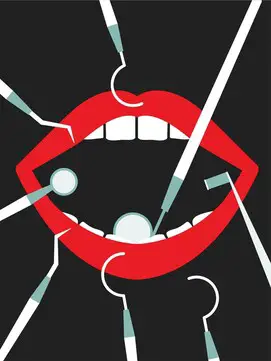 It's much less scientific—and more prone to gratuitous procedures—than you may think. It’s much less scientific—and more prone to gratuitous procedures—than you may think.In the early 2000s Terry Mitchell’s dentist retired. For a while, Mitchell, an electrician in his 50s, stopped seeking dental care altogether. But when one of his wisdom teeth began to ache, he started looking for someone new. An acquaintance recommended John Roger Lund, whose practice was a convenient 10-minute walk from Mitchell’s home, in San Jose, California. Lund’s practice was situated in a one-story building with clay roof tiles that housed several dental offices. The interior was a little dated, but not dingy. The waiting room was small and the decor minimal: some plants and photos, no fish. Lund was a good-looking middle-aged guy with arched eyebrows, round glasses, and graying hair that framed a youthful face. He was charming, chatty, and upbeat. At the time, Mitchell and Lund both owned Chevrolet Chevelles, and they bonded over their mutual love of classic cars. Lund extracted the wisdom tooth with no complications, and Mitchell began seeing him regularly. He never had any pain or new complaints, but Lund encouraged many additional treatments nonetheless. A typical person might get one or two root canals in a lifetime. In the space of seven years, Lund gave Mitchell nine root canals and just as many crowns. Mitchell’s insurance covered only a small portion of each procedure, so he paid a total of about $50,000 out of pocket. The number and cost of the treatments did not trouble him. He had no idea that it was unusual to undergo so many root canals—he thought they were just as common as fillings. The payments were spread out over a relatively long period of time. And he trusted Lund completely. He figured that if he needed the treatments, then he might as well get them before things grew worse. Meanwhile, another of Lund’s patients was going through a similar experience. Joyce Cordi, a businesswoman in her 50s, had learned of Lund through 1-800-DENTIST. She remembers the service giving him an excellent rating. When she visited Lund for the first time, in 1999, she had never had so much as a cavity. To the best of her knowledge her teeth were perfectly healthy, although she’d had a small dental bridge installed to fix a rare congenital anomaly (she was born with one tooth trapped inside another and had had them extracted). Within a year, Lund was questioning the resilience of her bridge and telling her she needed root canals and crowns. Cordi was somewhat perplexed. Why the sudden need for so many procedures after decades of good dental health? When she expressed uncertainty, she says, Lund always had an answer ready. The cavity on this tooth was in the wrong position to treat with a typical filling, he told her on one occasion. Her gums were receding, which had resulted in tooth decay, he explained during another visit. Clearly she had been grinding her teeth. And, after all, she was getting older. As a doctor’s daughter, Cordi had been raised with an especially respectful view of medical professionals. Lund was insistent, so she agreed to the procedures. Over the course of a decade, Lund gave Cordi 10 root canals and 10 crowns. He also chiseled out her bridge, replacing it with two new ones that left a conspicuous gap in her front teeth. Altogether, the work cost her about $70,000. A masked figure looms over your recumbent body, wielding power tools and sharp metal instruments, doing things to your mouth you cannot see. In early 2012, Lund retired. Brendon Zeidler, a young dentist looking to expand his business, bought Lund’s practice and assumed responsibility for his patients. Within a few months, Zeidler began to suspect that something was amiss. Financial records indicated that Lund had been spectacularly successful, but Zeidler was making only 10 to 25 percent of Lund’s reported earnings each month. As Zeidler met more of Lund’s former patients, he noticed a disquieting trend: Many of them had undergone extensive dental work—a much larger proportion than he would have expected. When Zeidler told them, after routine exams or cleanings, that they didn’t need any additional procedures at that time, they tended to react with surprise and concern: Was he sure? Nothing at all? Had he checked thoroughly? In the summer, Zeidler decided to take a closer look at Lund’s career. He gathered years’ worth of dental records and bills for Lund’s patients and began to scrutinize them, one by one. The process took him months to complete. What he uncovered was appalling. We have a fraught relationship with dentists as authority figures. In casual conversation we often dismiss them as “not real doctors,” regarding them more as mechanics for the mouth. But that disdain is tempered by fear. For more than a century, dentistry has been half-jokingly compared to torture. Surveys suggest that up to 61 percent of people are apprehensive about seeing the dentist, perhaps 15 percent are so anxious that they avoid the dentist almost entirely, and a smaller percentage have a genuine phobia requiring psychiatric intervention. When you’re in the dentist’s chair, the power imbalance between practitioner and patient becomes palpable. A masked figure looms over your recumbent body, wielding power tools and sharp metal instruments, doing things to your mouth you cannot see, asking you questions you cannot properly answer, and judging you all the while. The experience simultaneously invokes physical danger, emotional vulnerability, and mental limpness. A cavity or receding gum line can suddenly feel like a personal failure. When a dentist declares that there is a problem, that something must be done before it’s too late, who has the courage or expertise to disagree? When he points at spectral smudges on an X-ray, how are we to know what’s true? In other medical contexts, such as a visit to a general practitioner or a cardiologist, we are fairly accustomed to seeking a second opinion before agreeing to surgery or an expensive regimen of pills with harsh side effects. But in the dentist’s office—perhaps because we both dread dental procedures and belittle their medical significance—the impulse is to comply without much consideration, to get the whole thing over with as quickly as possible. The uneasy relationship between dentist and patient is further complicated by an unfortunate reality: Common dental procedures are not always as safe, effective, or durable as we are meant to believe. As a profession, dentistry has not yet applied the same level of self-scrutiny as medicine, or embraced as sweeping an emphasis on scientific evidence. “We are isolated from the larger health-care system. So when evidence-based policies are being made, dentistry is often left out of the equation,” says Jane Gillette, a dentist in Bozeman, Montana, who works closely with the American Dental Association’s Center for Evidence-Based Dentistry, which was established in 2007. “We’re kind of behind the times, but increasingly we are trying to move the needle forward.” Consider the maxim that everyone should visit the dentist twice a year for cleanings. We hear it so often, and from such a young age, that we’ve internalized it as truth. But this supposed commandment of oral health has no scientific grounding. Scholars have traced its origins to a few potential sources, including a toothpaste advertisement from the 1930s and an illustrated pamphlet from 1849 that follows the travails of a man with a severe toothache. Today, an increasing number of dentists acknowledge that adults with good oral hygiene need to see a dentist only once every 12 to 16 months. Many standard dental treatments—to say nothing of all the recent innovations and cosmetic extravagances—are likewise not well substantiated by research. Many have never been tested in meticulous clinical trials. And the data that are available are not always reassuring. The Cochrane organization, a highly respected arbiter of evidence-based medicine, has conducted systematic reviews of oral-health studies since 1999. In these reviews, researchers analyze the scientific literature on a particular dental intervention, focusing on the most rigorous and well-designed studies. In some cases, the findings clearly justify a given procedure. For example, dental sealants—liquid plastics painted onto the pits and grooves of teeth like nail polish—reduce tooth decay in children and have no known risks. (Despite this, they are not widely used, possibly because they are too simple and inexpensive to earn dentists much money.) But most of the Cochrane reviews reach one of two disheartening conclusions: Either the available evidence fails to confirm the purported benefits of a given dental intervention, or there is simply not enough research to say anything substantive one way or another. Fluoridation of drinking water seems to help reduce tooth decay in children, but there is insufficient evidence that it does the same for adults. Some data suggest that regular flossing, in addition to brushing, mitigates gum disease, but there is only “weak, very unreliable” evidence that it combats plaque. As for common but invasive dental procedures, an increasing number of dentists question the tradition of prophylactic wisdom-teeth removal; often, the safer choice is to monitor unproblematic teeth for any worrying developments. Little medical evidence justifies the substitution of tooth-colored resins for typical metal amalgams to fill cavities. And what limited data we have don’t clearly indicate whether it’s better to repair a root-canaled tooth with a crown or a filling. When Cochrane researchers tried to determine whether faulty metal fillings should be repaired or replaced, they could not find a single study that met their standards. “The body of evidence for dentistry is disappointing,” says Derek Richards, the director of the Centre for Evidence-Based Dentistry at the University of Dundee, in Scotland. “Dentists tend to want to treat or intervene. They are more akin to surgeons than they are to physicians. We suffer a little from that. Everybody keeps fiddling with stuff, trying out the newest thing, but they don’t test them properly in a good-quality trial.” The general dearth of rigorous research on dental interventions gives dentists even more leverage over their patients. Should a patient somehow muster the gumption to question an initial diagnosis and consult the scientific literature, she would probably not find much to help her. When we submit to a dentist’s examination, we are putting a great deal of trust in that dentist’s experience and intuition—and, of course, integrity. When zeidler purchased lund’s practice, in February 2012, he inherited a massive collection of patients’ dental histories and bills, a mix of electronic documents, handwritten charts, and X‑rays. By August, Zeidler had decided that if anything could explain the alarmingly abundant dental work in the mouths of Lund’s patients, he would find it in those records. He spent every weekend for the next nine months examining the charts of hundreds of patients treated in the preceding five years. In a giant Excel spreadsheet, he logged every single procedure Lund had performed, so he could carry out some basic statistical analyses. The numbers spoke for themselves. Year after year, Lund had performed certain procedures at extraordinarily high rates. Whereas a typical dentist might perform root canals on previously crowned teeth in only 3 to 7 percent of cases, Lund was performing them in 90 percent of cases. As Zeidler later alleged in court documents, Lund had performed invasive, costly, and seemingly unnecessary procedures on dozens and dozens of patients, some of whom he had been seeing for decades. Terry Mitchell and Joyce Cordi were far from alone. In fact, they had not even endured the worst of it. Whereas medicine has reckoned with some of its own tendencies toward excessive and misguided treatment, dentistry has lagged behind. Dental crowns were one of Lund’s most frequent treatments. A crown is a metal or ceramic cap that completely encases an injured or decayed tooth, which is first shaved to a peg so its new shell will fit. Crowns typically last 10 to 15 years. Lund not only gave his patients superfluous crowns; he also tended to replace them every five years—the minimum interval of time before insurance companies will cover the procedure again. More than 50 of Lund’s patients also had ludicrously high numbers of root canals: 15, 20, 24. (A typical adult mouth has 32 teeth.) According to one lawsuit that has since been settled, a woman in her late 50s came to Lund with only 10 natural teeth; from 2003 to 2010, he gave her nine root canals and 12 crowns. The American Association of Endodontists claims that a root canal is a “quick, comfortable procedure” that is “very similar to a routine filling.” In truth, a root canal is a much more radical operation than a filling. It takes longer, can cause significant discomfort, and may require multiple trips to a dentist or specialist. It’s also much more costly. Read: Americans are going to Juarez for cheap dental care Root canals are typically used to treat infections of the pulp—the soft living core of a tooth. A dentist drills a hole through a tooth in order to access the root canals: long, narrow channels containing nerves, blood vessels, and connective tissue. The dentist then repeatedly twists skinny metal files in and out of the canals to scrape away all the living tissue, irrigates the canals with disinfectant, and packs them with a rubberlike material. The whole process usually takes one to two hours. Afterward, sometimes at a second visit, the dentist will strengthen the tooth with a filling or crown. In the rare case that infection returns, the patient must go through the whole ordeal again or consider more advanced surgery. Zeidler noticed that nearly every time Lund gave someone a root canal, he also charged for an incision and drainage, known as an I&D. During an I&D, a dentist lances an abscess in the mouth and drains the exudate, all while the patient is awake. In some cases the dentist slips a small rubber tube into the wound, which continues to drain fluids and remains in place for a few days. I&Ds are not routine adjuncts to root canals. They should be used only to treat severe infections, which occur in a minority of cases. Yet they were extremely common in Lund’s practice. In 2009, for example, Lund billed his patients for 109 I&Ds. Zeidler asked many of those patients about the treatments, but none of them recalled what would almost certainly have been a memorable experience. In addition to performing scores of seemingly unnecessary procedures that could result in chronic pain, medical complications, and further operations, Lund had apparently billed patients for treatments he had never administered. Zeidler was alarmed and distressed. “We go into this profession to care for patients,” he told me. “That is why we become doctors. To find, I felt, someone was doing the exact opposite of that—it was very hard, very hard to accept that someone was willing to do that.” Zeidler knew what he had to do next. As a dental professional, he had certain ethical obligations. He needed to confront Lund directly and give him the chance to account for all the anomalies. Even more daunting, in the absence of a credible explanation, he would have to divulge his discoveries to the patients Lund had bequeathed to him. He would have to tell them that the man to whom they had entrusted their care—some of them for two decades—had apparently deceived them for his own profit. The idea of the dentist as potential charlatan has a long and rich history. In medieval Europe, barbers didn’t just trim hair and shave beards; they were also surgeons, performing a range of minor operations including bloodletting, the administration of enemas, and tooth extraction. Barber surgeons, and the more specialized “tooth drawers,” would wrench, smash, and knock teeth out of people’s mouths with an intimidating metal instrument called a dental key: Imagine a chimera of a hook, a hammer, and forceps. Sometimes the results were disastrous. In the 1700s, Thomas Berdmore, King George III’s “Operator for the Teeth,” described one woman who lost “a piece of jawbone as big as a walnut and three neighbouring molars” at the hands of a local barber. Barber surgeons came to America as early as 1636. By the 18th century, dentistry was firmly established in the colonies as a trade akin to blacksmithing (Paul Revere was an early American craftsman of artisanal dentures). Itinerant dentists moved from town to town by carriage with carts of dreaded tools in tow, temporarily setting up shop in a tavern or town square. They yanked teeth or bored into them with hand drills, filling cavities with mercury, tin, gold, or molten lead. For anesthetic, they used arsenic, nutgalls, mustard seed, leeches. Mixed in with the honest tradesmen—who genuinely believed in the therapeutic power of bloodsucking worms—were swindlers who urged their customers to have numerous teeth removed in a single sitting or charged them extra to stuff their pitted molars with homemade gunk of dubious benefit. In the mid-19th century, a pair of American dentists began to elevate their trade to the level of a profession. From 1839 to 1840, Horace Hayden and Chapin Harris established dentistry’s first college, scientific journal, and national association. Some historical accounts claim that Hayden and Harris approached the University of Maryland’s School of Medicine about adding dental instruction to the curriculum, only to be rebuffed by the resident physicians, who declared that dentistry was of little consequence. But no definitive proof of this encounter has ever surfaced. Whatever happened, from that point on, “the professions of dentistry and medicine would develop along separate paths,” writes Mary Otto, a health journalist, in her recent book, Teeth. Becoming a practicing physician requires four years of medical school followed by a three-to-seven-year residency program, depending on the specialty. Dentists earn a degree in four years and, in most states, can immediately take the national board exams, get a license, and begin treating patients. (Some choose to continue training in a specialty, such as orthodontics or oral and maxillofacial surgery.) When physicians complete their residency, they typically work for a hospital, university, or large health-care organization with substantial oversight, strict ethical codes, and standardized treatment regimens. By contrast, about 80 percent of the nation’s 200,000 active dentists have individual practices, and although they are bound by a code of ethics, they typically don’t have the same level of oversight. Read: Why dentistry is separate from medicine Throughout history, many physicians have lamented the segregation of dentistry and medicine. Acting as though oral health is somehow divorced from one’s overall well-being is absurd; the two are inextricably linked. Oral bacteria and the toxins they produce can migrate through the bloodstream and airways, potentially damaging the heart and lungs. Poor oral health is associated with narrowing arteries, cardiovascular disease, stroke, and respiratory disease, possibly due to a complex interplay of oral microbes and the immune system. And some research suggests that gum disease can be an early sign of diabetes, indicating a relationship between sugar, oral bacteria, and chronic inflammation. Dentistry’s academic and professional isolation has been especially detrimental to its own scientific inquiry. Most major medical associations around the world have long endorsed evidence-based medicine. The idea is to shift focus away from intuition, anecdote, and received wisdom, and toward the conclusions of rigorous clinical research. Although the phrase evidence-based medicine was coined in 1991, the concept began taking shape in the 1960s, if not earlier (some scholars trace its origins all the way back to the 17th century). In contrast, the dental community did not begin having similar conversations until the mid-1990s. There are dozens of journals and organizations devoted to evidence-based medicine, but only a handful devoted to evidence-based dentistry. In the past decade, a small cohort of dentists has worked diligently to promote evidence-based dentistry, hosting workshops, publishing clinical-practice guidelines based on systematic reviews of research, and creating websites that curate useful resources. But its adoption “has been a relatively slow process,” as a 2016 commentary in the Contemporary Clinical Dentistry journal put it. Part of the problem is funding: Because dentistry is often sidelined from medicine at large, it simply does not receive as much money from the government and industry to tackle these issues. “At a recent conference, very few practitioners were even aware of the existence of evidence-based clinical guidelines,” says Elliot Abt, a professor of oral medicine at the University of Illinois. “You can publish a guideline in a journal, but passive dissemination of information is clearly not adequate for real change.” Among other problems, dentistry’s struggle to embrace scientific inquiry has left dentists with considerable latitude to advise unnecessary procedures—whether intentionally or not. The standard euphemism for this proclivity is overtreatment. Favored procedures, many of which are elaborate and steeply priced, include root canals, the application of crowns and veneers, teeth whitening and filing, deep cleaning, gum grafts, fillings for “microcavities”—incipient lesions that do not require immediate treatment—and superfluous restorations and replacements, such as swapping old metal fillings for modern resin ones. Whereas medicine has made progress in reckoning with at least some of its own tendencies toward excessive and misguided treatment, dentistry is lagging behind. It remains “largely focused upon surgical procedures to treat the symptoms of disease,” Mary Otto writes. “America’s dental care system continues to reward those surgical procedures far more than it does prevention.” “Excessive diagnosis and treatment are endemic,” says Jeffrey H. Camm, a dentist of more than 35 years who wryly described his peers’ penchant for “creative diagnosis” in a 2013 commentary published by the American Dental Association. “I don’t want to be damning. I think the majority of dentists are pretty good.” But many have “this attitude of ‘Oh, here’s a spot, I’ve got to do something.’ I’ve been contacted by all kinds of practitioners who are upset because patients come in and they already have three crowns, or 12 fillings, or another dentist told them that their 2-year-old child has several cavities and needs to be sedated for the procedure.” Trish Walraven, who worked as a dental hygienist for 25 years and now manages a dental-software company with her husband in Texas, recalls many troubling cases: “We would see patients seeking a second opinion, and they had treatment plans telling them they need eight fillings in virgin teeth. We would look at X-rays and say, ‘You’ve got to be kidding me.’ It was blatantly overtreatment—drilling into teeth that did not need it whatsoever.” Joyce Cordi’s new dentist says her X-rays resemble those of someone who had reconstructive facial surgery following a car crash. Studies that explicitly focus on overtreatment in dentistry are rare, but a recent field experiment provides some clues about its pervasiveness. A team of researchers at ETH Zurich, a Swiss university, asked a volunteer patient with three tiny, shallow cavities to visit 180 randomly selected dentists in Zurich. The Swiss Dental Guidelines state that such minor cavities do not require fillings; rather, the dentist should monitor the decay and encourage the patient to brush regularly, which can reverse the damage. Despite this, 50 of the 180 dentists suggested unnecessary treatment. Their recommendations were incongruous: Collectively, the overzealous dentists singled out 13 different teeth for drilling; each advised one to six fillings. Similarly, in an investigation for Reader’s Digest, the writer William Ecenbarger visited 50 dentists in 28 states in the U.S. and received prescriptions ranging from a single crown to a full-mouth reconstruction, with the price tag starting at about $500 and going up to nearly $30,000. A multitude of factors has conspired to create both the opportunity and the motive for widespread overtreatment in dentistry. In addition to dentistry’s seclusion from the greater medical community, its traditional emphasis on procedure rather than prevention, and its lack of rigorous self-evaluation, there are economic explanations. The financial burden of entering the profession is high and rising. In the U.S., the average debt of a dental-school graduate is more than $200,000. And then there’s the expense of finding an office, buying new equipment, and hiring staff to set up a private practice. A dentist’s income is entirely dependent on the number and type of procedures he or she performs; a routine cleaning and examination earns only a baseline fee of about $200. In parallel with the rising cost of dental school, the amount of tooth decay in many countries’ populations has declined dramatically over the past four decades, mostly thanks to the introduction of mass-produced fluoridated toothpaste in the 1950s and ’60s. In the 1980s, with fewer genuine problems to treat, some practitioners turned to the newly flourishing industry of cosmetic dentistry, promoting elective procedures such as bleaching, teeth filing and straightening, gum lifts, and veneers. It’s easy to see how dentists, hoping to buoy their income, would be tempted to recommend frequent exams and proactive treatments—a small filling here, a new crown there—even when waiting and watching would be better. It’s equally easy to imagine how that behavior might escalate. “If I were to sum it up, I really think the majority of dentists are great. But for some reason we seem to drift toward this attitude of ‘I’ve got tools so I’ve got to fix something’ much too often,” says Jeffrey Camm. “Maybe it’s greed, or paying off debt, or maybe it’s someone’s training. It’s easy to lose sight of the fact that even something that seems minor, like a filling, involves removal of a human body part. It just adds to the whole idea that you go to a physician feeling bad and you walk out feeling better, but you go to a dentist feeling good and you walk out feeling bad.”  In the summer of 2013, Zeidler asked several other dentists to review Lund’s records. They all agreed with his conclusions. The likelihood that Lund’s patients genuinely needed that many treatments was extremely low. And there was no medical evidence to justify many of Lund’s decisions or to explain the phantom procedures. Zeidler confronted Lund about his discoveries in several face-to-face meetings. When I asked Zeidler how those meetings went, he offered a single sentence—“I decided shortly thereafter to take legal action”—and declined to comment further. (Repeated attempts were made to contact Lund and his lawyer for this story, but neither responded.) One by one, Zeidler began to write, call, or sit down with patients who had previously been in Lund’s care, explaining what he had uncovered. They were shocked and angry. Lund had been charismatic and professional. They had assumed that his diagnoses and treatments were meant to keep them healthy. Isn’t that what doctors do? “It makes you feel like you have been violated,” Terry Mitchell says—“somebody performing stuff on your body that doesn’t need to be done.” Joyce Cordi recalls a “moment of absolute fury” when she first learned of Lund’s deceit. On top of all the needless operations, “there were all kinds of drains and things that I paid for and the insurance company paid for that never happened,” she says. “But you can’t read the dentalese.” “A lot of them felt, How can I be so stupid? Or Why didn’t I go elsewhere?” Zeidler says. “But this is not about intellect. It’s about betrayal of trust.” In October 2013, Zeidler sued Lund for misrepresenting his practice and breaching their contract. In the lawsuit, Zeidler and his lawyers argued that Lund’s reported practice income of $729,000 to $988,000 a year was “a result of fraudulent billing activity, billing for treatment that was unnecessary and billing for treatment which was never performed.” The suit was settled for a confidential amount. From 2014 to 2017, 10 of Lund’s former patients, including Mitchell and Cordi, sued him for a mix of fraud, deceit, battery, financial elder abuse, and dental malpractice. They collectively reached a nearly $3 million settlement, paid out by Lund’s insurance company. (Lund did not admit to any wrongdoing.) Lund was arrested in May 2016 and released on $250,000 bail. The Santa Clara County district attorney’s office is prosecuting a criminal case against him based on 26 counts of insurance fraud. At the time of his arraignment, he said he was innocent of all charges. The Dental Board of California is seeking to revoke or suspend Lund’s license, which is currently inactive. Many of Lund’s former patients worry about their future health. A root canal is not a permanent fix. It requires maintenance and, in the long run, may need to be replaced with a dental implant. One of Mitchell’s root canals has already failed: The tooth fractured, and an infection developed. He said that in order to treat the infection, the tooth was extracted and he underwent a multistage procedure involving a bone graft and months of healing before an implant and a crown were fixed in place. “I don’t know how much these root canals are going to cost me down the line,” Mitchell says. “Six thousand dollars a pop for an implant—it adds up pretty quick.” Joyce Cordi’s new dentist says her X‑rays resemble those of someone who had reconstructive facial surgery following a car crash. Because Lund installed her new dental bridges improperly, one of her teeth is continually damaged by everyday chewing. “It hurts like hell,” she says. She has to wear a mouth guard every night. What some of Lund’s former patients regret most are the psychological repercussions of his alleged duplicity: the erosion of the covenant between practitioner and patient, the germ of doubt that infects the mind. “You lose your trust,” Mitchell says. “You become cynical. I have become more that way, and I don’t like it.” “He damaged the trust I need to have in the people who take care of me,” Cordi says. “He damaged my trust in mankind. That’s an unforgivable crime.” This article appears in the May 2019 print edition with the headline “The Trouble With Dentistry.” FERRIS JABR is a writer based in Portland, Oregon. His work has appeared in The New Yorker, The New York Times Magazine, and Scientific American. 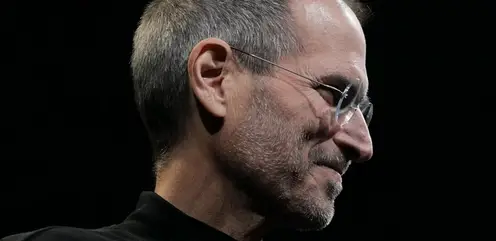 Meditation does more than just calm you down; it literally reverse-ages your brain. In the past, I've written that Steve Jobs used Zen mindfulness to train his brain, and that neuroscientists recently validated Jobs's theory about the business benefits of meditation. There was one thing, however, that Jobs didn't know, although he might have guessed it to be true. Meditation does more than just calm you down and make you a better manager. Meditation literally causes your brain to age backwards. Under normal circumstances, brains deteriorate as they age. According to Psychology Today: "Brain-scan technology reveals aging can cause the brain to shrink. Nerve tracts in the brain shrivel, making the cerebrospinal fluid cavities larger and even leaving gaping holes in the brain. Shriveling occurs in the neuron terminal branches that form the contact points among neurons. People may lose 40 percent or more of dopamine neurons causing Parkinson's disease." The deterioration of the brain has many symptoms. Reflexes become slower. Memory starts to fail. It becomes harder to learn new things. Thinking becomes brittle. Mental stamina declines.
These symptoms become measurable as early as age 45, at which point most people have already experienced a 3-4 percent decline in mental agility, and it's all downhill from there. By age 60, the changes are usually obvious; by age 70 they're often debilitating. Studies have shown that eating well, exercising, and learning new things can ameliorate these difficult symptoms. However, it appears that even when you manage your symptoms, your brain continues deteriorate. There is, however, apparently at least one way to not just stop the deterioration process but to put it in reverse. A study conducted at Massachusetts General Hospital and Harvard Medical School found that meditating for 30 minutes each day for eight weeks:
Since Steve Jobs was a regular meditator, when he died at 56 of pancreatic cancer, his brain would have been as healthy, active, and creative as when he was much younger. This shows in the quality of his work, which continued to be superlative right up to his untimely end. Samantha Reed for Bergen Review Media Here is a new study of the best and worst cities for living an active lifestyle in 2020. To determine where Americans have the best chance of balancing a healthy diet with ample physical activity, WalletHub compared the 100 biggest U.S. cities across 38 key metrics. The data set ranges from average monthly fitness-club fee to bike score to share of physically inactive adults. Check out more details on the findings below. You can read the whole study here. 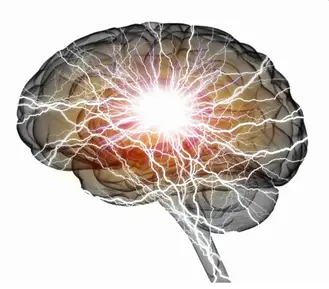 A compelling study has found that just five 20-minute magnetic stimulation sessions restored an older person's memory to the level of a younger control group. Researchers at Northwestern University have used a non-invasive form of magnetic brain stimulation to improve the memory of older adults. After just five short sessions the older adults scored as well as a younger cohort on a variety of memory tasks. Transcranial Magnetic Stimulation (TMS) is one of the more promising brain stimulation techniques currently being explored by scientists. Unlike other methods, which often involve invasive surgical implantation of electrodes, TMS is non-invasive, simply firing painless magnetic pulses into specific regions of the brain. The idea is that these magnetic pulses can alter neuronal activity, and recent technological advances have allowed researchers to target regions of the brain with incredible precision and specificity. The new Northwestern research focused on improving age-related memory loss, a common kind of cognitive decline associated with normal aging. To do this the scientists first homed in on the hippocampus, a region of the brain responsible for memory and known to atrophy as we age. "It's the part of the brain that links two unrelated things together into a memory, like the place you left your keys or your new neighbor's name," explains lead on the study, Joel Voss. "Older adults often complain about having trouble with this." Because the hippocampus was found to be too deep to be affected by the magnetic pulses of TMS, the researchers focused on the parietal lobe. This brain region is generally located behind a person's left ear, and is known to be highly connected to the hippocampus. The hypothesis was that stimulating the parietal lobe would synchronously stimulate the hippocampus, and subsequently improve neural activity in these brain regions responsible for memory. The cohort studied was small, 16 adults aged between 64 and 80, but the results were reasonably conclusive. All subjects were first tested on an array of different memory tasks. The older cohort were, on average, only correct around 40 percent of the time, compared to a control group of younger subjects that scored an average of around 55 percent. For each of the next five days the older subjects underwent a 20-minute session consisting of either a fake placebo stimulation or the targeted TMS. Each subject was then again tested on a series of memory tasks. Those older subjects receiving the TMS displayed significant improvements in the memory tests compared to the placebo group. Using fMRI imaging the researchers found the TMS subjects showed increased neural signaling in the hippocampal-cortical network. And, perhaps most impressively, the older cohort's results on the memory tasks had improved to the point they were similar to the younger control group. "Older people's memory got better up to the level that we could no longer tell them apart from younger people," says Voss. "They got substantially better." This exciting new study somewhat resembles recent work from a team at Boston University using non-invasive electrical stimulation to improve working memory in 70-year-old subjects to the point they functioned like healthy 20-year-olds. That research used electrodes on the scalp to send mild electrical pulses through the frontotemporal cortex, designed to increase neural synchronization patterns, and subsequently improve working memory function. It is early days for this kind of brain stimulation research, and for the TMS work at Northwestern there are many unresolved questions that still need to be answered. How long do the memory improvements last? Are there other brain regions that can be stimulated for better results? And, does this technique work for dementia or early-stage Alzheimer's? Voss and his Northwestern team are determined to try to answer all these questions in the near future. The new study was published in the journal Neurology. Source: Northwestern University  Sit on your knees, lower your forehead to your mat, walk your finger tips forward, and send your weight into your heels. Voilà, you’re in child’s pose. The magic of this asana is in its simplicity, which is why I always feel so dumb when I can’t do it right. No matter how hard I press, my butt kind of just hovers above my heels. And all that pushing diminishes the bliss. Turns out, you can make a tiny tweak to really sink into balasana: Stop worrying about it. We push ourselves in so many areas of our lives, and child’s pose is about reaping the benefits of the work you’ve already done. Positioning your body in this manner is an intentional call for rest, reflection, and relaxation. “A common cue is hips to heels, but it doesn’t have to be that,” says Beth Cooke, celebrity yoga instructor at Sky Ting. “I grew up as a dancer and still when I made it to my yoga mat I was super uncomfortable in the shapes because I was constantly thinking I wasn’t doing it right. Isn’t it so much cooler if you can just pay attention to what feels good and what doesn’t?” Cooke says the inability to sit on your heels is often due to injury, tight hips, a tight low back, or tight calves, among other causes. With time and practice, you’ll be able to sit further back. Finding the ability to sit back deeply into child’s pose measures the progress of everything else you’ve accomplished. “This is why a common adjustment is to traction the hips back,” says Cooke. “My hips didn’t used to sit as far back as they do now.” And while child’s pose is a great way to get connected and take your attention inward, it’s not for everyone. “If child’s pose doesn’t feel good altogether, don’t do it, start on your back instead,” Cooke says. “There’s a difference between uncomfortable and painful. If there’s a little discomfort, that probably means you’re growing, you’re stretching—that’s what we learn to breathe through. If it’s painful, switch it up.” Welp, yoga just got much more relaxing. Here’s to embracing an imperfectly perfect child’s pose. While we’re getting the most out of our yoga practice, try this child’s pose variation for period pain  By Taylor Tobin for Bergen Review Media A popular phrase “older and wiser” refers to the fact that we as human beings gather more life experience and more valuable lessons as we age. But unfortunately, our neurological systems don’t always cooperate. Individuals entering middle age and their senior years frequently seek out ways to keep their memories keen and their mental instincts sharp. And according to neuroscientist Sara Lazar of Mass General and Harvard Medical School, one “New Age-y” practice could help mature adults recapture the quick-thinking abilities of their youths. Lazar tells Inc. that mindfulness meditation (a category of practices that includes yoga) has neurological properties that can restore the brain to a youthful level of agility. She reached her conclusions after a series of experiments in which she tested the brain functions of dedicated meditators and compared them to a random control group. In addition to noting meditation’s capacity for “decreasing stress, depression, and anxiety, reducing pain and insomnia, and increasing quality of life,” Lazar discovered that the 50-year-olds with a long (6-9 years minimum) history of meditation had the same amount of gray matter in their frontal cortexes (the area of the brain responsible for memory and decision-making) as individuals half their age. However, Lazar found herself curious about whether briefer exposure to meditation practices could make a difference in cognitive development. So, she conducted a second study, this time using volunteers with no meditation experience.
She exposed this group to an eight-week mindfulness program, and at the end of the practice, she found that the subjects experienced thickening in several regions of their brains, including the hippocampus (which manages learning and memory), the TPJ (which controls empathy and the ability to see things from multiple perspectives) and the pons (which generates neurotransmitters). She also discovered a shrinking in the amygdalas — the part of the brain responsible for stress and aggression — of the subjects. During her second study, Lazar determined that a meditation practice consisting of less than 30 minutes of mindfulness per day can make a difference in mental fitness. She encourages readers to take whatever time they can manage to focus on their own wellness, claiming that meditation is “a lot like exercise. Exercising three times a week is great. But if all you can do is just a little bit every day, that’s a good thing, too.” I Suffered From Back Pain For 2 Years — These Are the 8 Exercises That Got Rid of It For Good4/5/2020
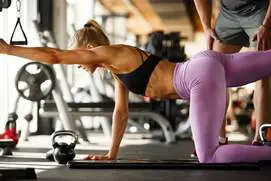 by Tamara Pridgett for Bergen Review Sometimes it takes an injury to remind you just how important every bone and muscle in your body is. For me, I didn't realize just how important my back, core, and glutes were until I experienced lower back pain. For a good seven months, I got spasms daily, I could barely walk, and bodyweight exercises were too difficult to perform, which all led to me feeling depressed and like I was never going to get better. I had gone from being a Division 1, All-American sprinter to barely being able to do bodyweight lunges without pain. After spending entirely too much money and two years looking for a physical therapist, I finally found a group of therapists who figured out the root of my back pain and helped me get rid of it for good. What Caused My Back Pain Long story short: my scoliosis has caused structural imbalances for most of my life, and as a result, I had muscular weakness and imbalances on the left side of my body. Not to mention, I learned that my L4 and L5 discs were herniated. My therapists also found that my glutes and core weren't firing like they should, which meant that every time I ran, lifted, and did anything that involved a heavy load, my back was absorbing a majority of that load instead of the appropriate muscle groups. The Exercises I Did to Get Rid of Lower Back Pain In order to get rid of back pain, I went to physical therapy religiously two times a week for about three months. During those sessions, I didn't do anything intense. I simply worked on glute activation and core activation exercises. I'm talking doing glute bridge variations and plank variations, and focusing on little details like making sure my spine was in a neutral position at all times and that I wasn't compensating on one side of my body. It was boring, extremely boring, but it was absolutely necessary. Not only did I have to focus on my glute and core strength during physical therapy, but I also had to change my workouts to apply everything I had been practicing. How I Changed My Workouts Once the physical therapists were able to pinpoint the cause of my back pain, it was time to get to work. I had made the mistake of trying to do too much, too soon multiple times, which only set me back in the long run. Another mistake I had made before finding my team of therapists was doing intense workouts on the rare days that my back felt good. This didn't work in my favor because I never addressed the true issue, which was glute and core weakness. With the advice of my therapists, I started out with bodyweight exercises and gradually increased the complexity of the movements and weight. Regardless of the exercise, I always made sure that my glutes and core were actually firing and to check my form in the mirror. Ultimately, I had to relearn how to move with and without weight, but it was worth it. I know a lot of different things can cause back pain, so you'll definitely want to speak to a pro to figure out what is causing your pain. One thing I can say for sure, especially as a trainer, is that everyone can benefit from doing more glute- and core-activating exercises. I wouldn't do every single move from the ahead list at once. Instead, choose two to three core exercises (e.g. plank with knee tap, side bridge, and bird dog) and two to three glute exercises (e.g. glute bridge, fire hydrants, and donkey kicks) and complete them before every workout and at least two times a week. You shouldn't feel any pain while performing the exercises, and if you do, stop immediately! If you are suffering from back pain, I highly recommend speaking to an expert, such as a physical therapist, who can come up with an individualized plan to help you become pain-free. In the meantime, check out the 12 exercises that helped me get rid of back pain ahead.  A combination of sleeping more than nine hours a night plus midday naps lasting more than 90 minutes increased a person's risk for stroke by 85 percent. A new epidemiological study from a team of Chinese researchers is suggesting sleeping more than nine hours a night, and/or taking long midday naps, can significantly increase a person’s risk of stroke. The research does not highlight a particular causal connection between stroke and too much sleep but does add to a growing body of work finding deleterious health effects from excessive sleep. The research involved analyzing data from a longitudinal research project called the Dongfeng-Tongji cohort study. This study is following a cohort of over 30,000 people, with an average age of 62 at the time of enrollment, and has been running for almost 10 years. The new article, published in the journal Neurology, examines the relationship between sleep patterns and incidence of stroke. Across six years of follow-up, the cohort reported around 1,500 cases of stroke. The study identified a reasonably striking correlation linking long sleeping duration with increased rates of stroke. People reporting regular midday naps lasting more than 90 minutes were 25 percent more likely to suffer from a stroke, compared to those reporting daily naps of 60 minutes or less. Sleeping more than nine hours every night also correlated with a 23 percent increase in stroke risk. This increase in the incidence of stroke was not seen in those sleeping less than nine hours a night. Interestingly, even those reporting nightly sleep duration of less than seven hours did not display higher incidence of stroke. Combining long midday naps with excessive nightly sleep resulted in the highest stroke risk, with those individuals displaying 85 percent higher rates of stroke than short nappers with average nightly sleep patterns. At this stage it is unclear if there is a causal link between excessive sleep and stroke. The researchers are clear in pointing out the study only identifies an association. Xiaomin Zhang, an author on the new study from Huazhong University of Science and Technology in Wuhan, China, suggests while excessive sleep may hypothetically result in negative physiological outcomes, it is just as reasonable to consider these longer sleep patterns to be symptoms of other unhealthy lifestyle behaviors that may be increasing a person’s stroke risk. "More research is needed to understand how taking long naps and sleeping longer hours at night may be tied to an increased risk of stroke, but previous studies have shown that long nappers and sleepers have unfavorable changes in their cholesterol levels and increased waist circumferences, both of which are risk factors for stroke," says Zhang. "In addition, long napping and sleeping may suggest an overall inactive lifestyle, which is also related to increased risk of stroke." The general limitation most of these large epidemiological sleep studies face is they primary rely on self-reported questionnaire data, often only recorded at a single point in time. Sleep quality and duration can be inconsistent so it is certainly difficult to ascertain long-term trends from subjective self-reporting. However, as researchers inevitably gather more and more data, certain trends can become apparent. The results of a massive sleep study published last year, tracking over 10,000 people, discovered an intriguing correlation between cognitive deficits and irregular sleep duration. That study found individuals who reported sleeping more than eight hours each night performed as poorly on several cognitive tests as those sleeping less than six hours each night. The optimal sleep duration recommended in that study was between seven and eight hours each night. It is not unreasonable to assume excessive sleep is merely a symptom, and not a cause, of a condition that could increase a person’s risk for stroke. But, at the very least, the new research can point to excessive sleep patterns as a valid warning sign of increased stroke risk in middle-aged and older adults. The new research was published in the journal Neurology. |
Written, Compiled & Edited byThe Bergen Review Media Team
�
Archives
April 2024
Categories
All
|
|
Bergen Review Media is a
WebClientReach, llc Company |
50 East Ridgewood Ave. #215
Ridgewood, NJ 07050 Phone: (201) 948-5500 |
The Bergen Review is Bergen county's concierge for the best businesses, restaurants & venues in New Jersey. Our agency has a combined total of over 15 years experience in online media and marketing. Our team of experts scour every nook and cranny of New Jerseys best businesses, restaurants & venues to present to our clients the full scoop of where best deals & experiences are. Even after researching & looking at reviews, finding the REAL scoop on what Businesses, restaurants or venues best fit your interest can be a challenge. Bergen Review Media has a team that researches & visits various establishments. Making sure the consumer gets the best experience.
|
Website by Bergen Review Media

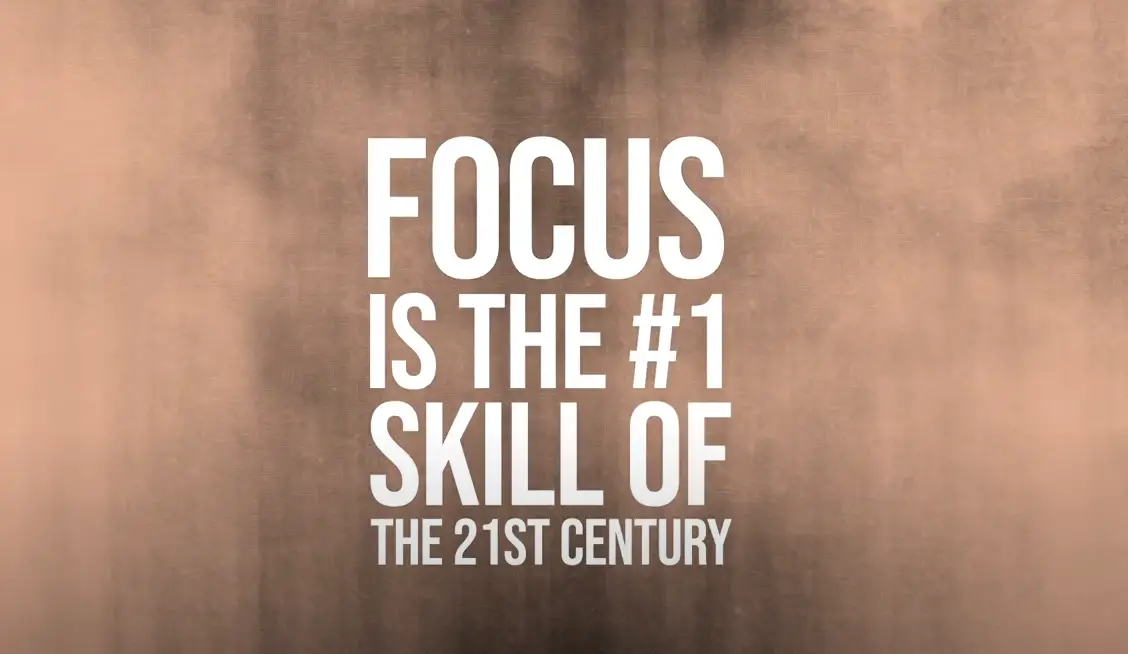
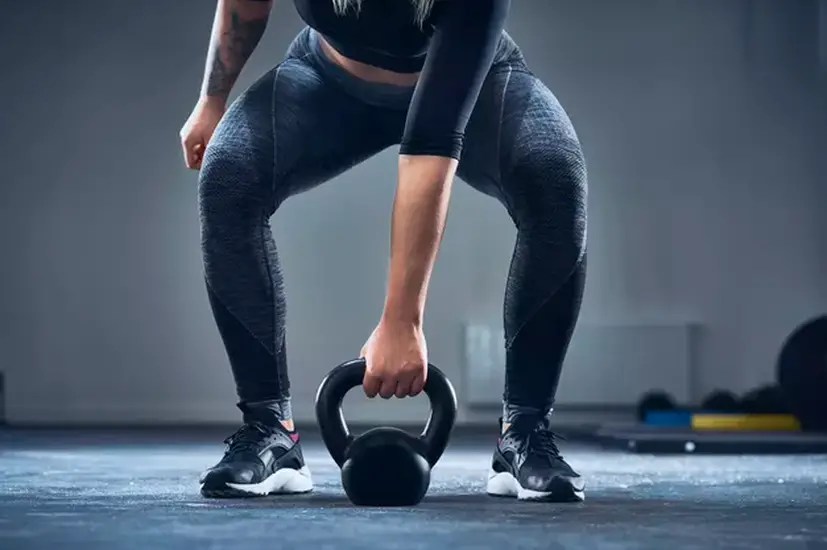
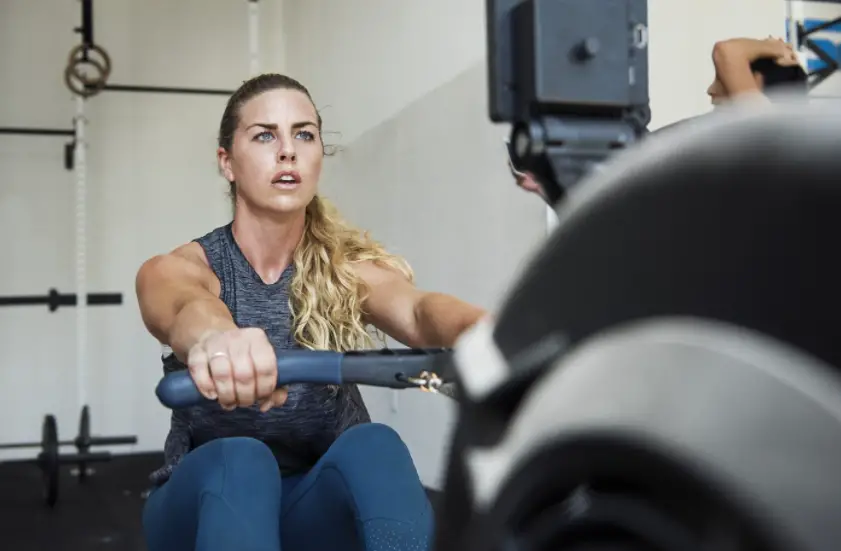
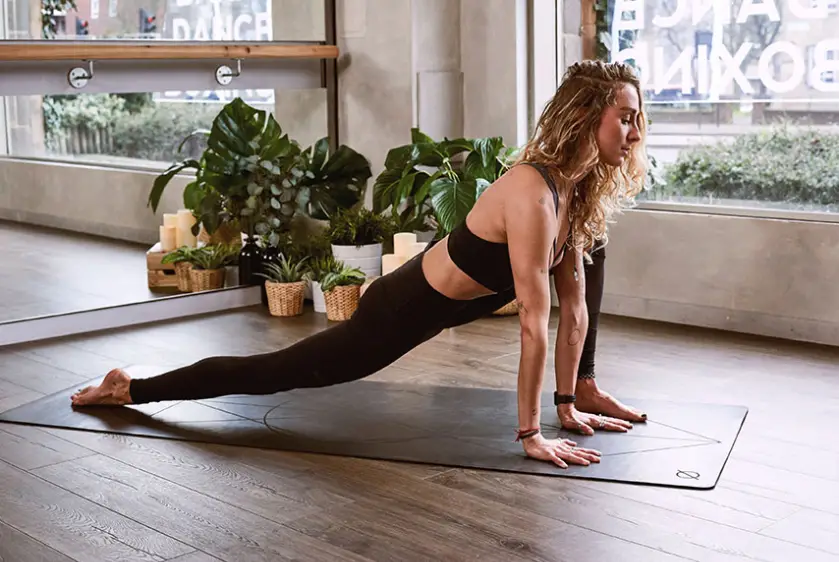

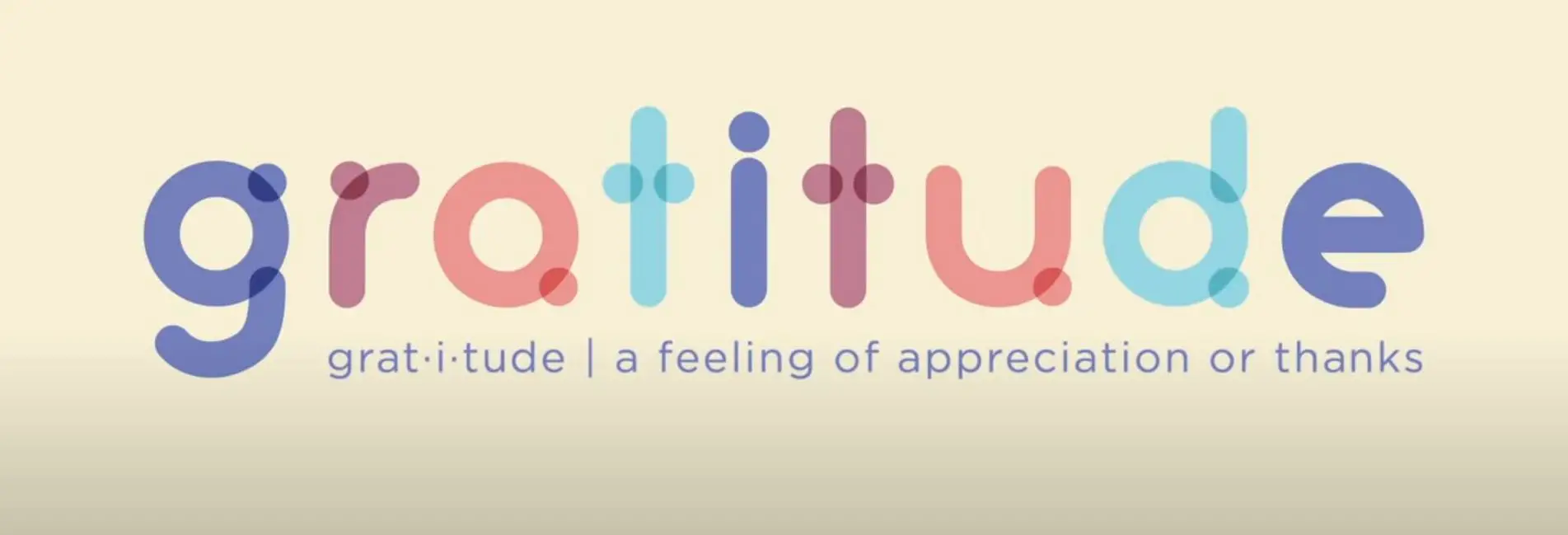




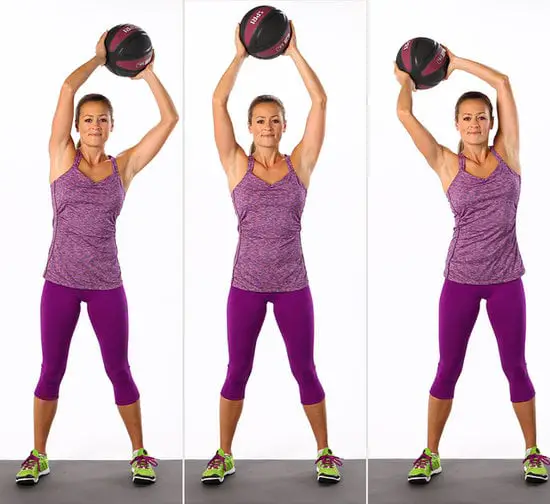
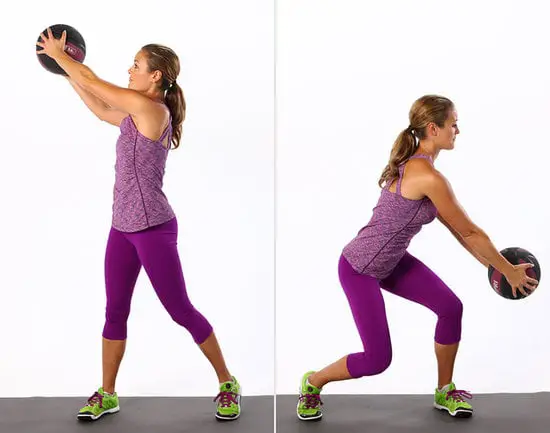


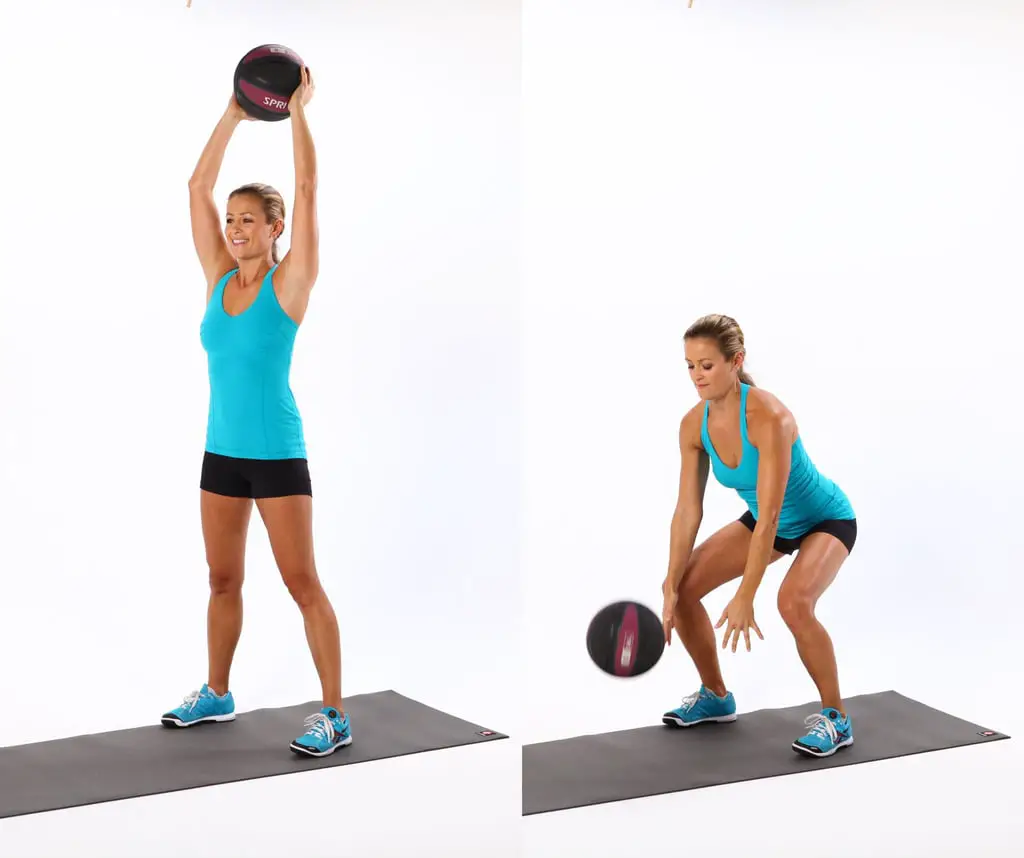
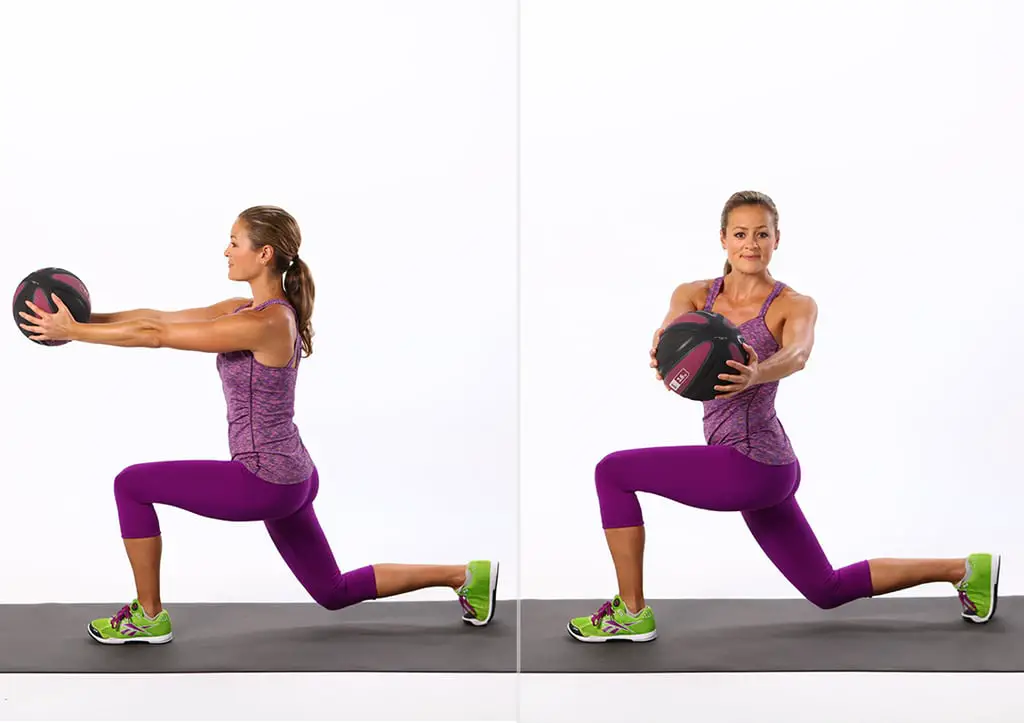
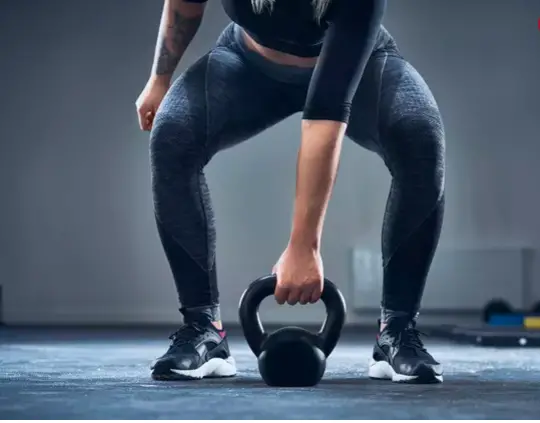



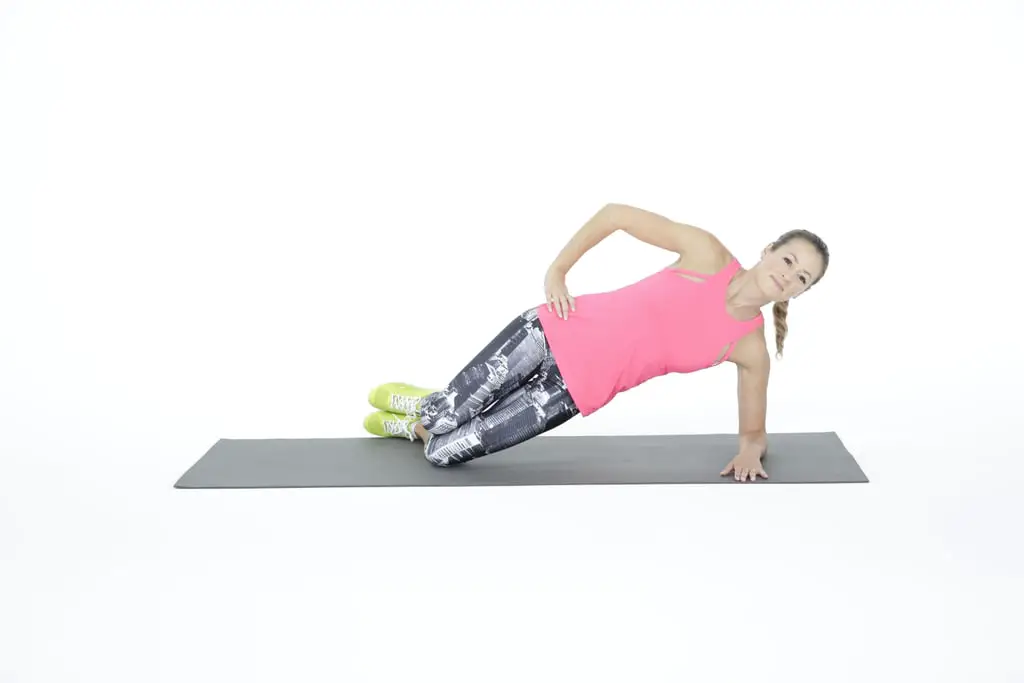

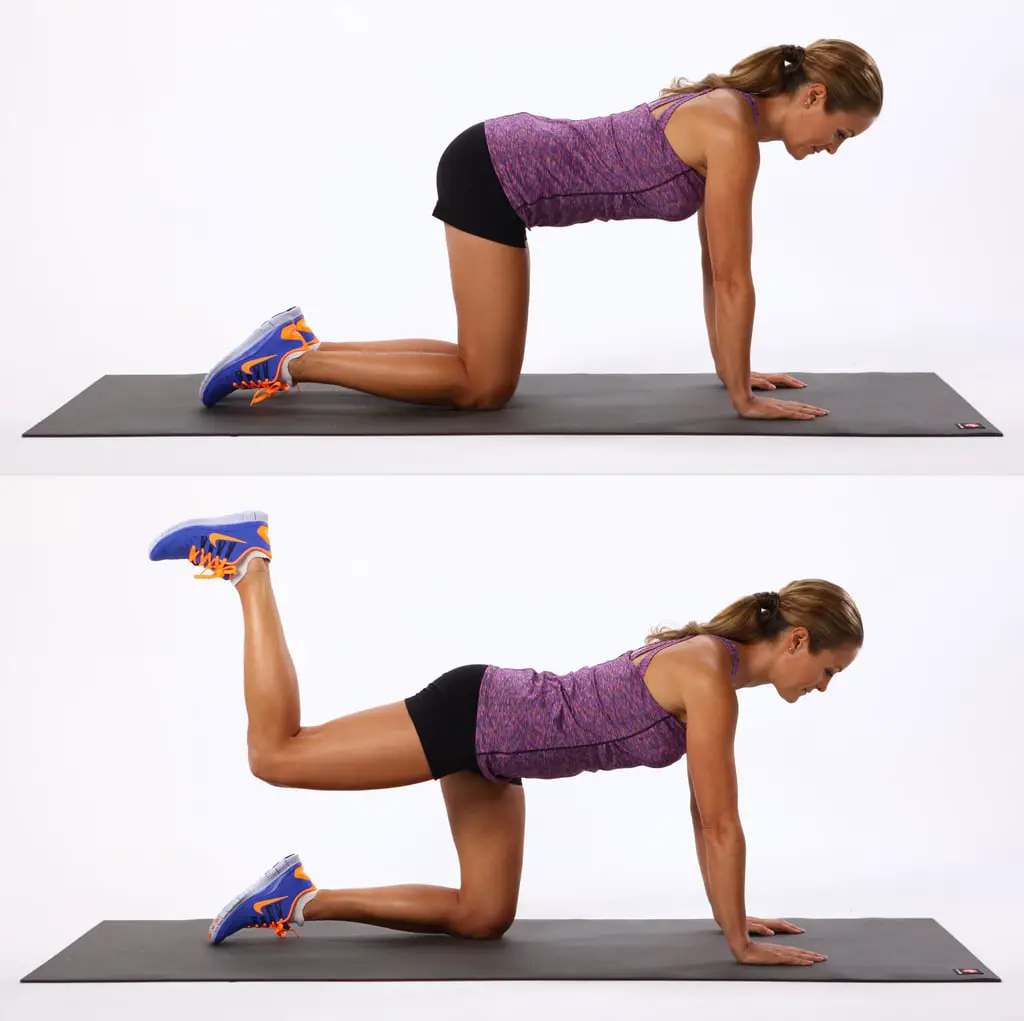
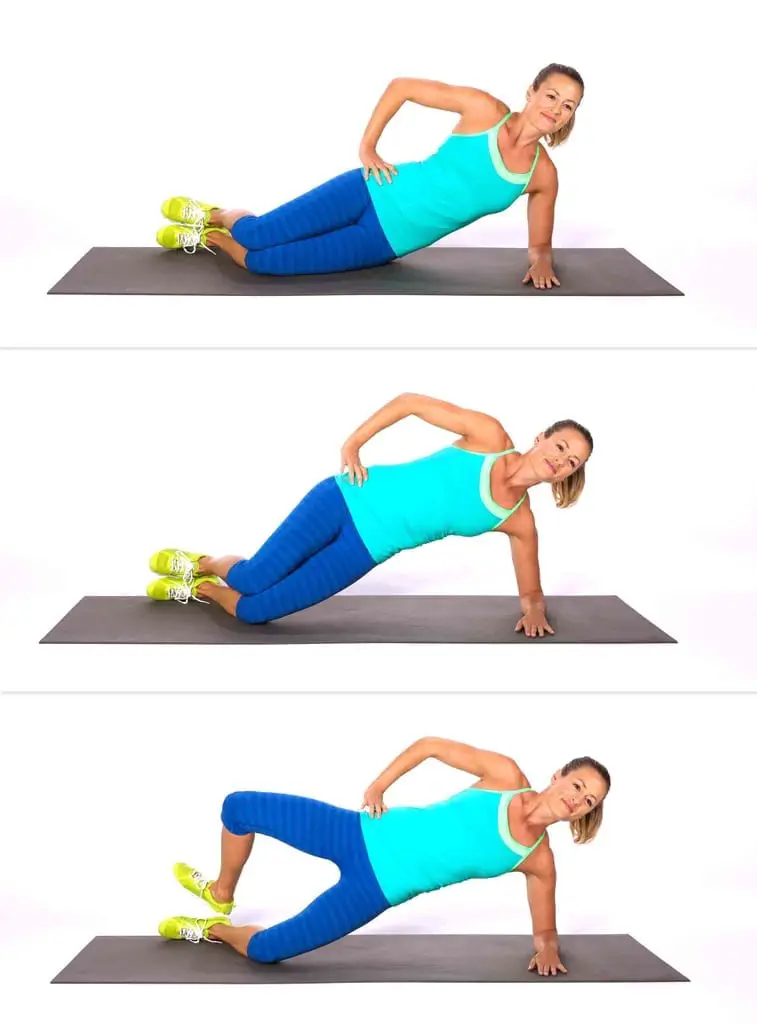


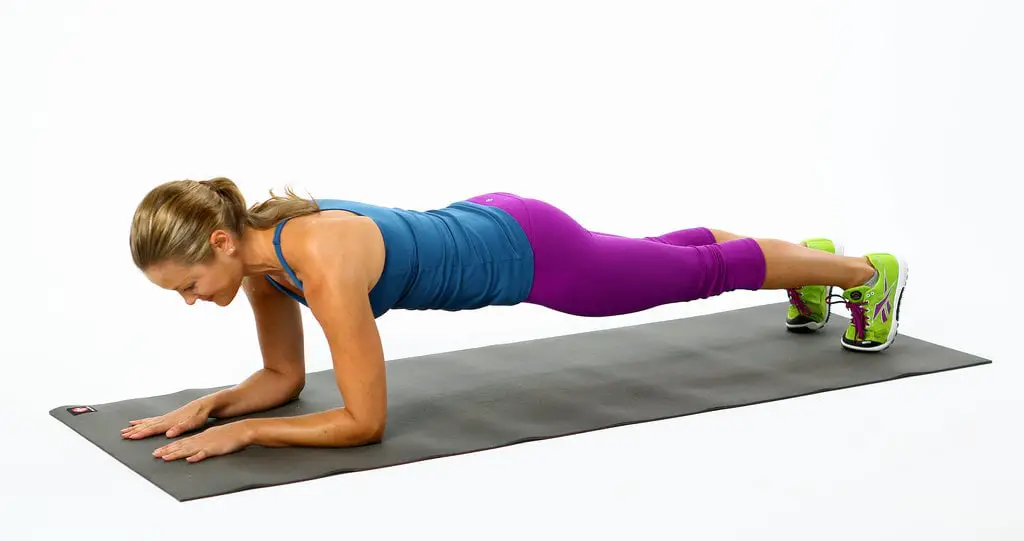
 RSS Feed
RSS Feed




